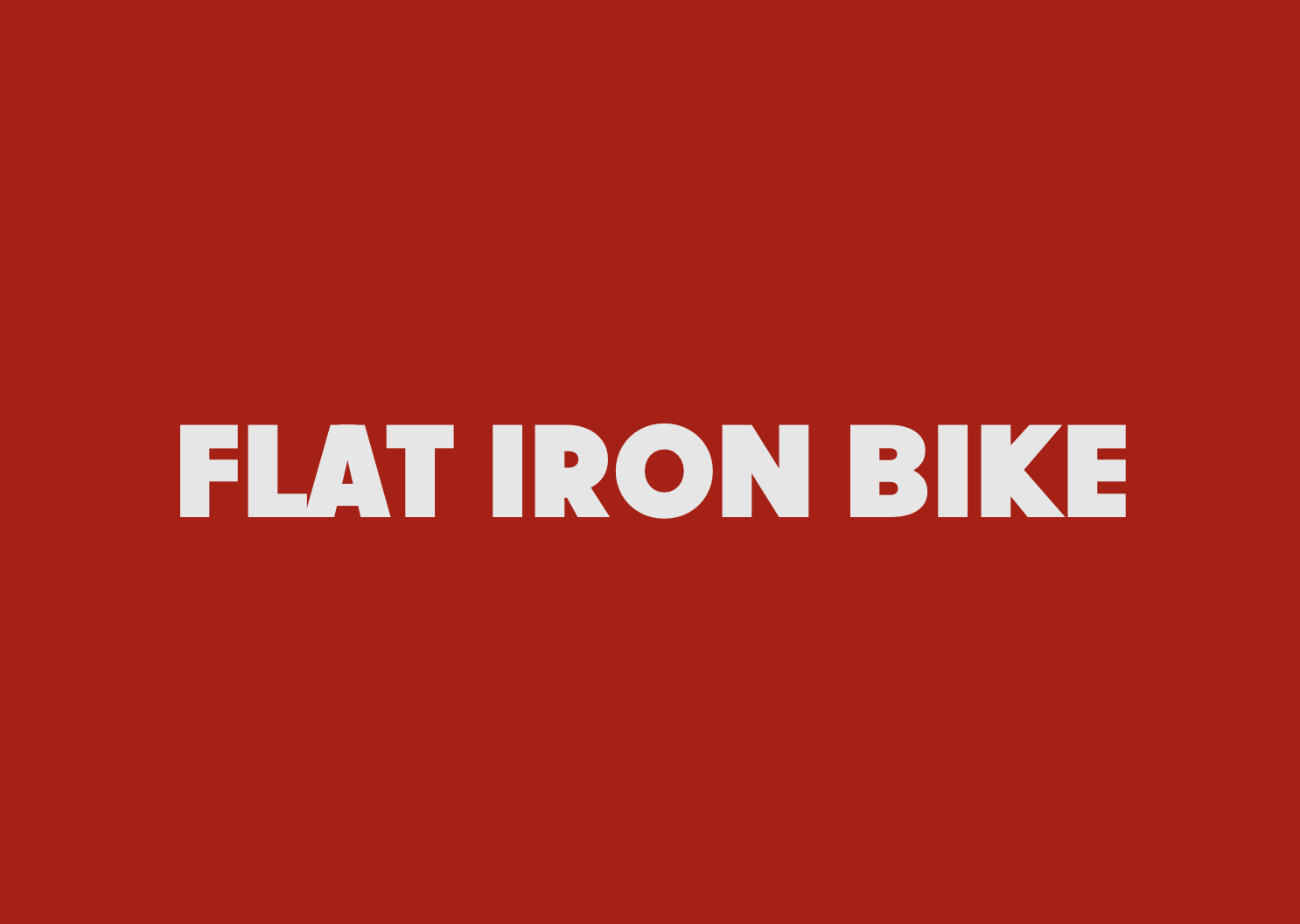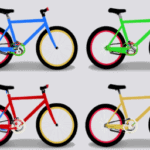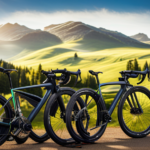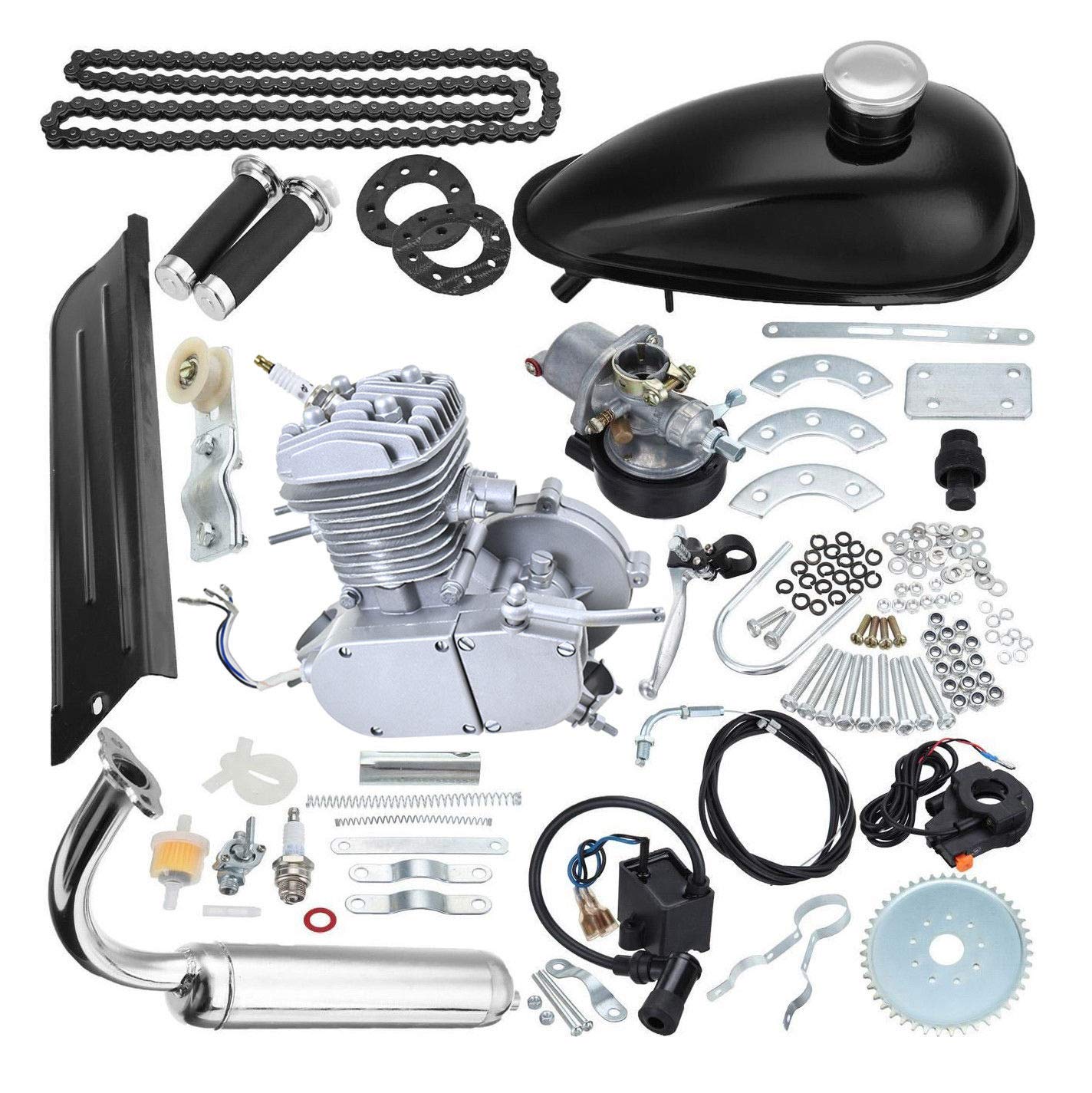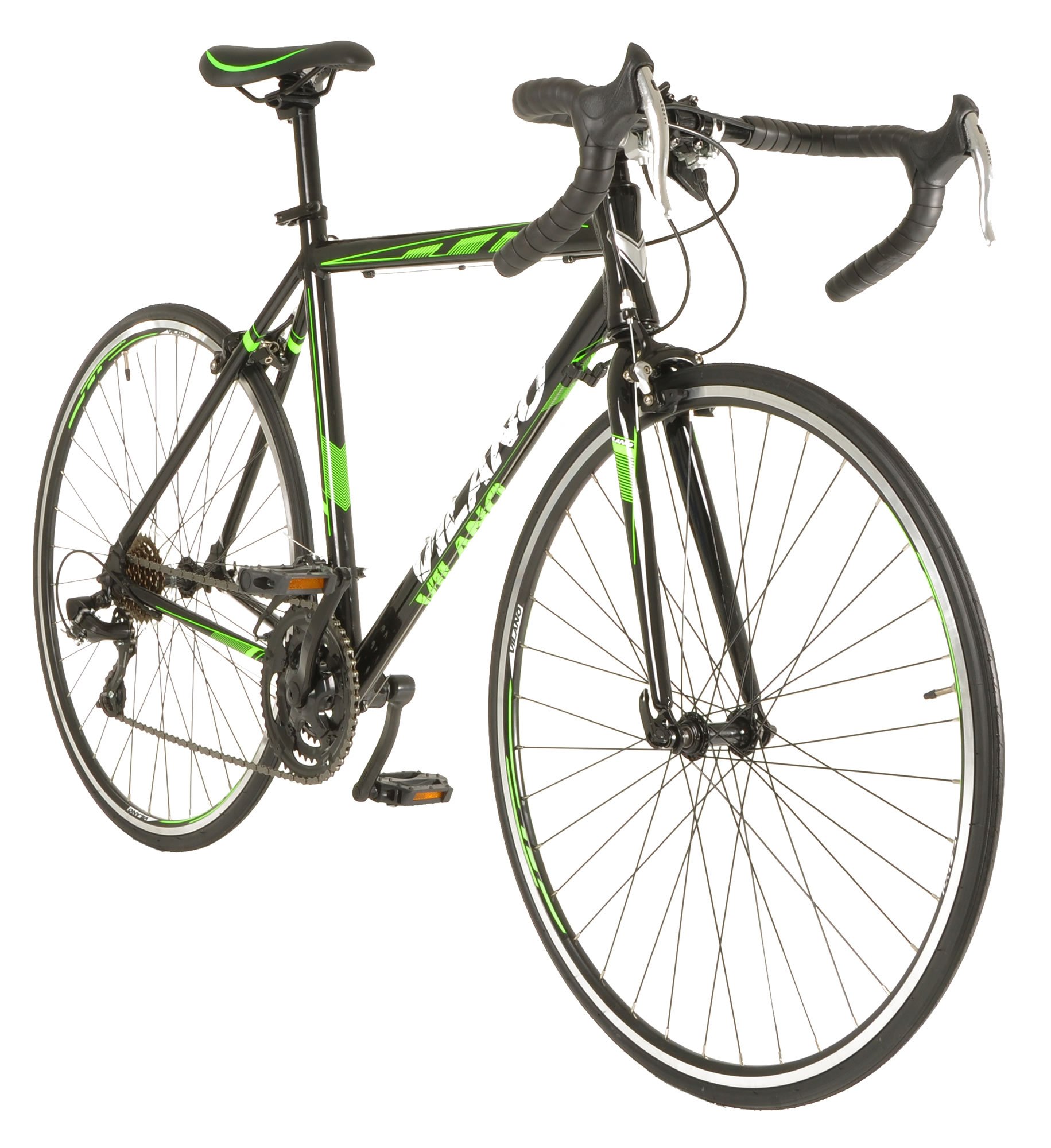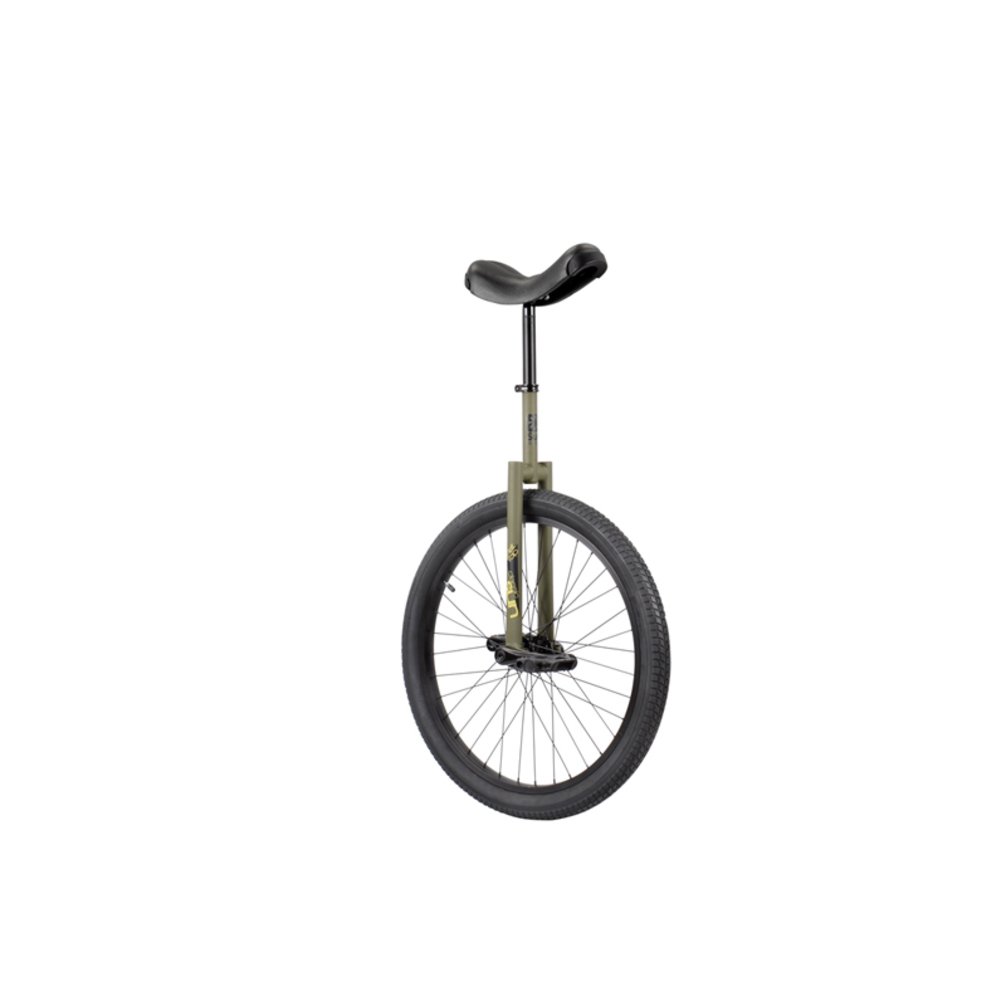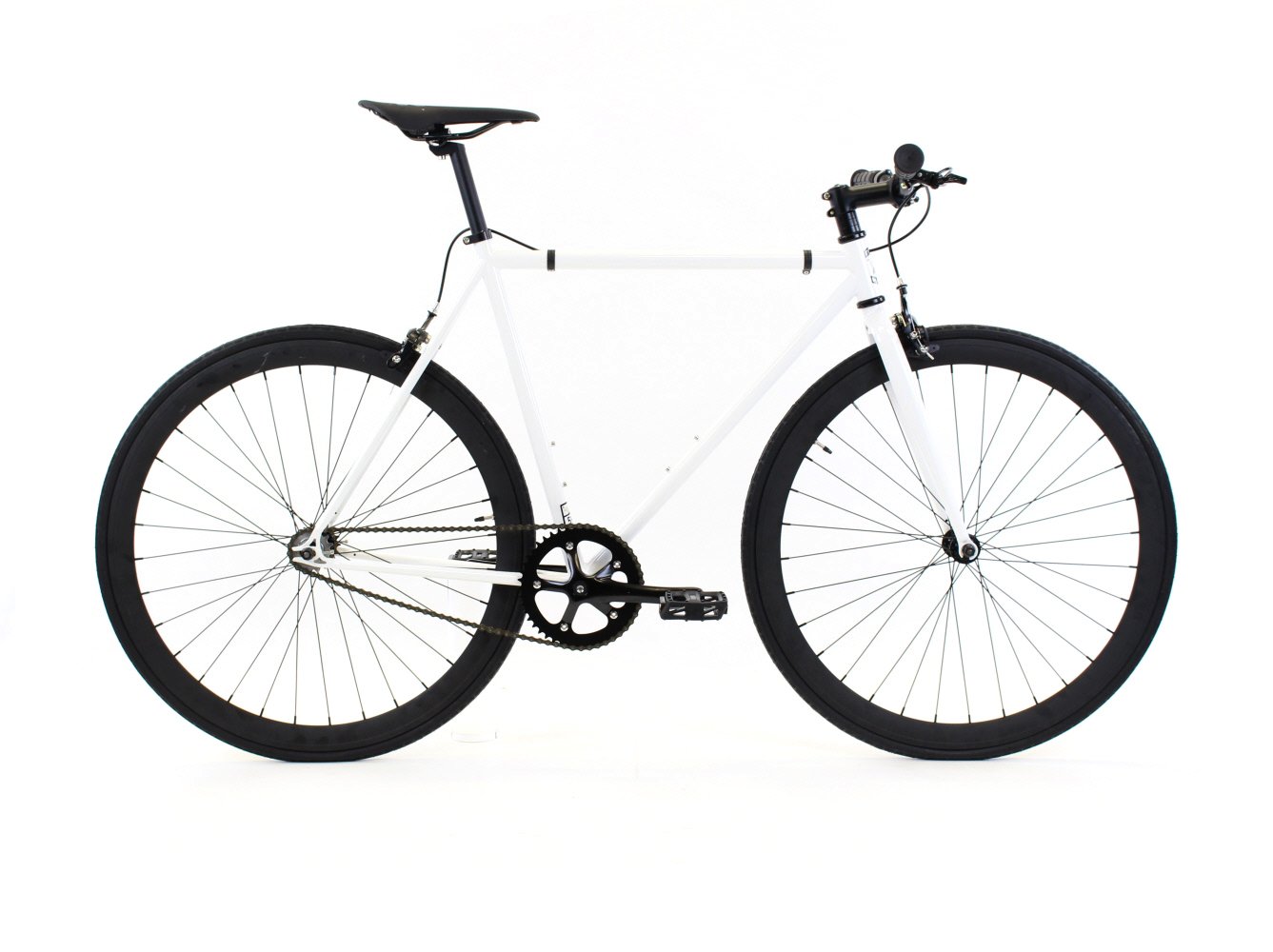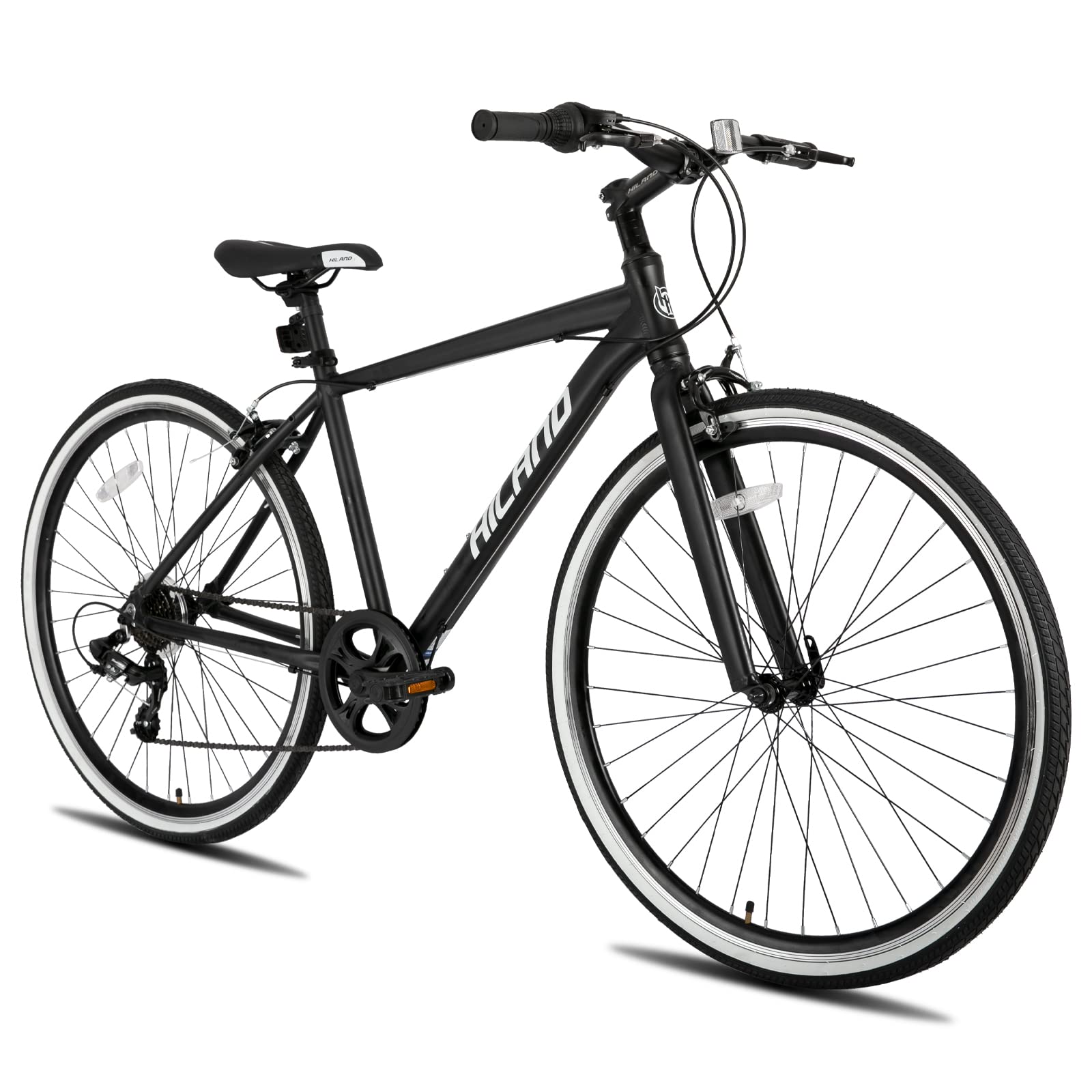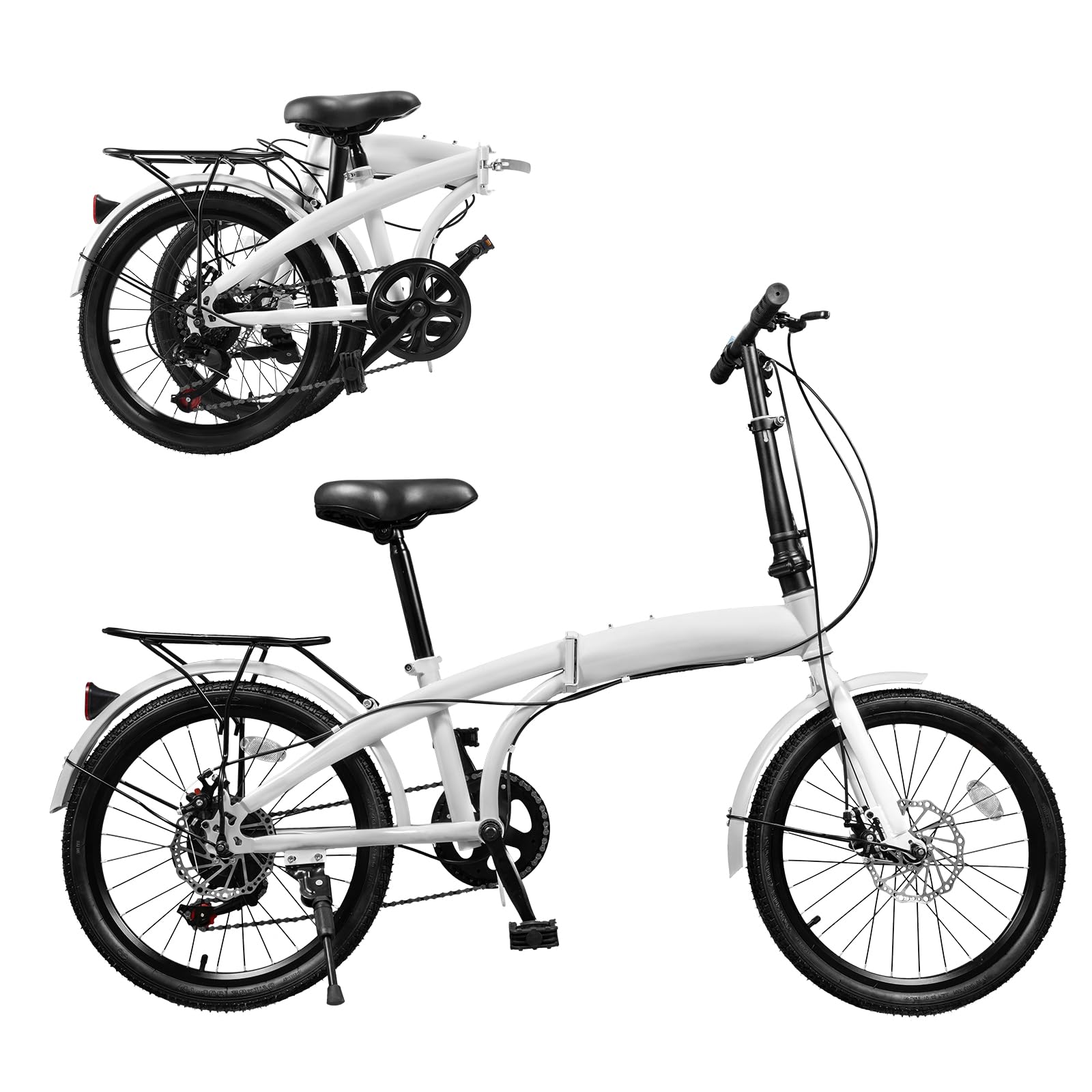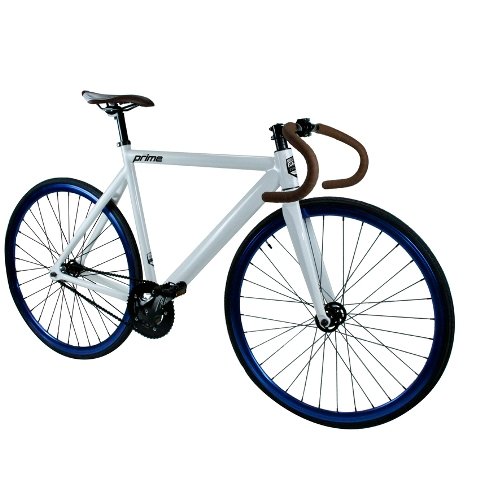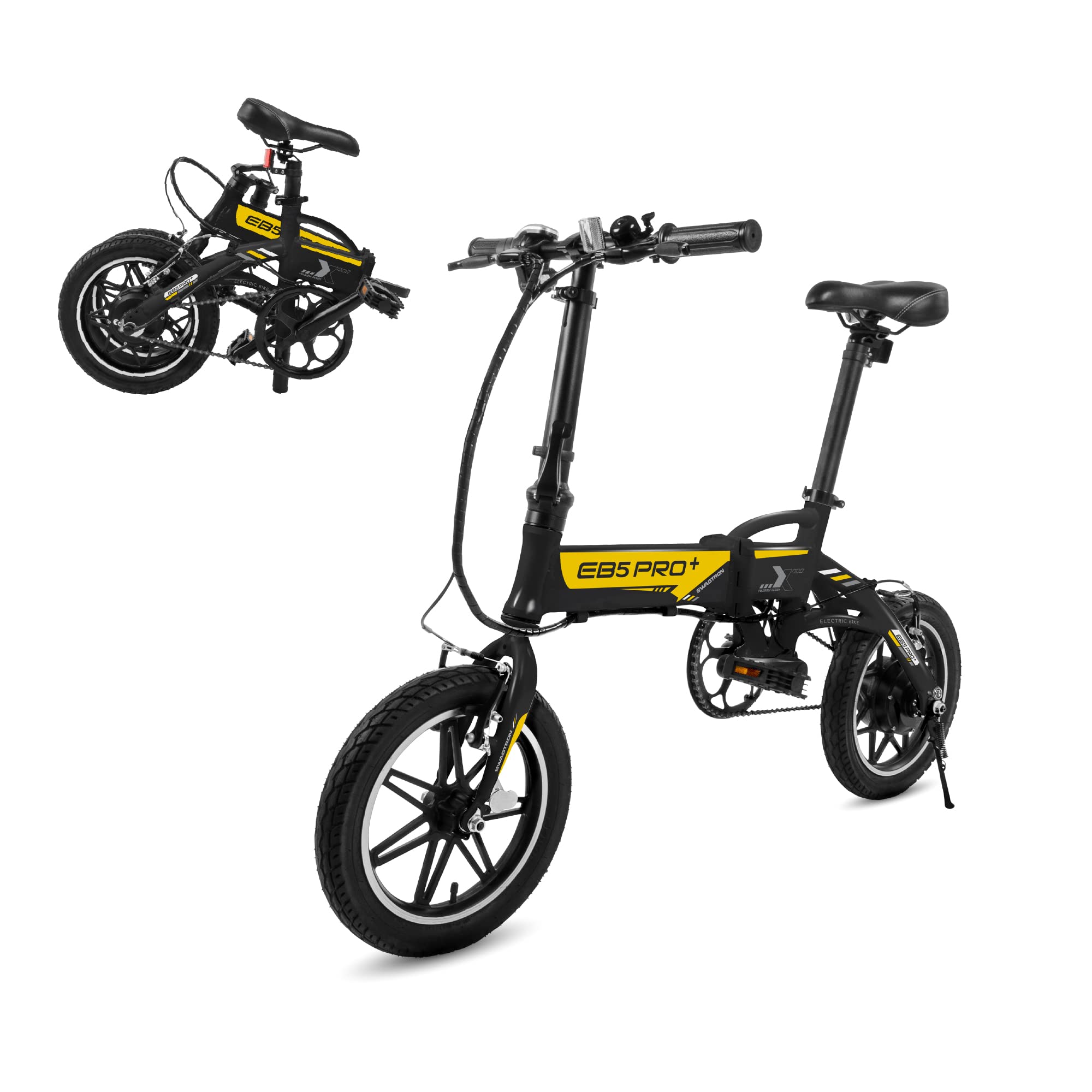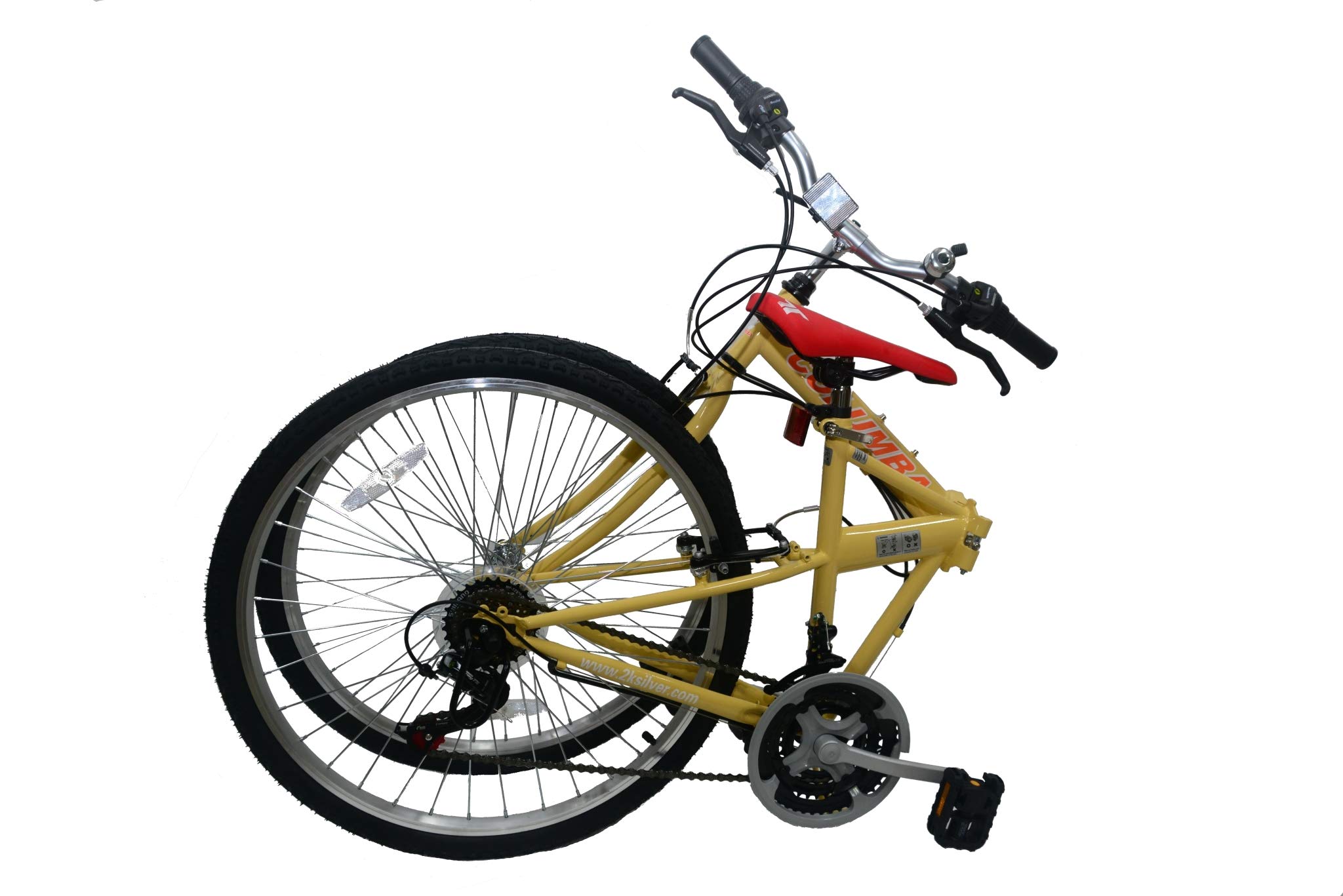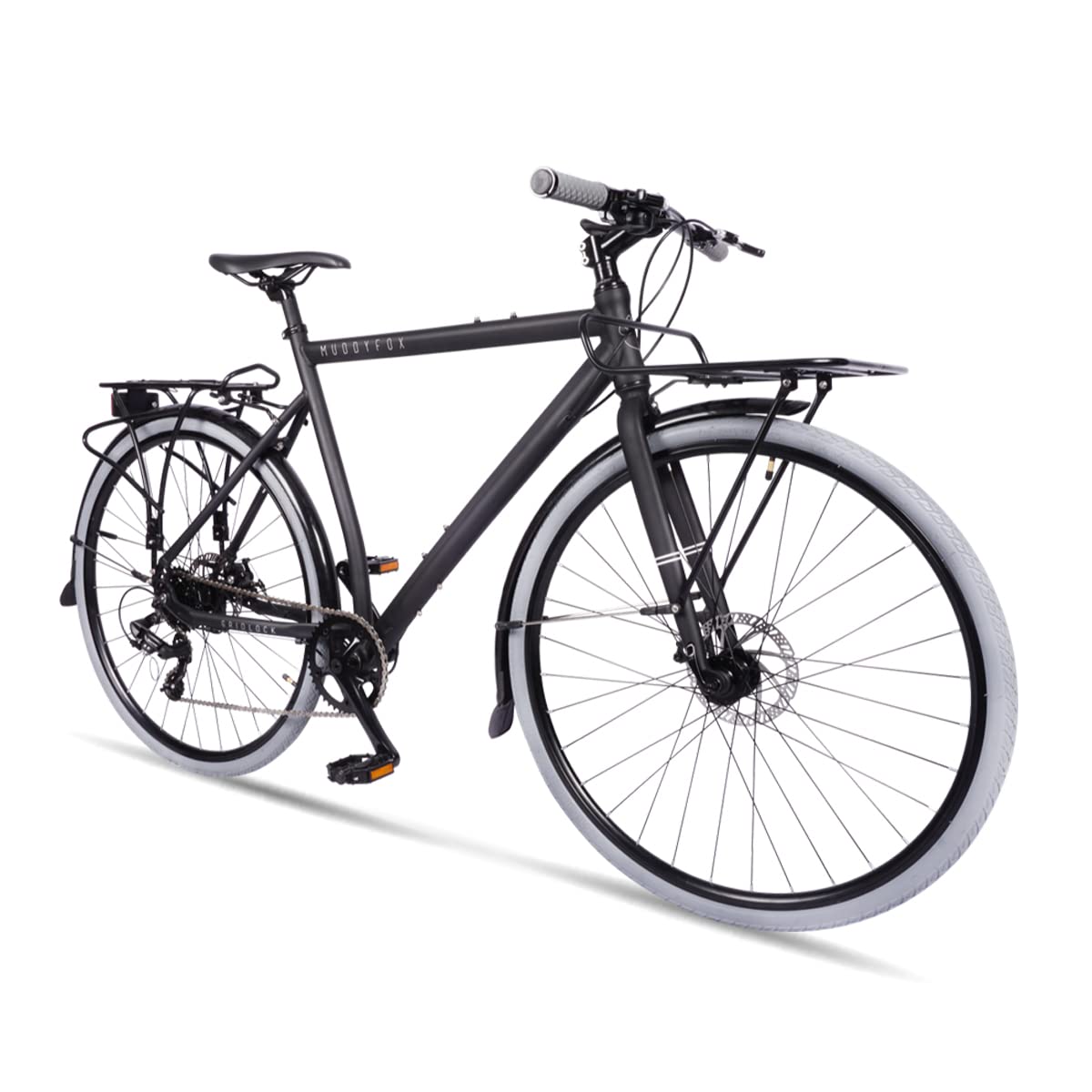Gravel Bike
Why A Flat Bar Gravel Bike

As I ride through the wild outdoors, my reliable flat bar gravel bike feels like a part of me. Its adaptable structure and comfortable upright riding position make for a completely engaging adventure.
Whether conquering long-distance rides or navigating rough terrains with ease, this two-wheeled companion is unmatched in its stability and control. Its smooth efficiency and customization options make it a perfect choice for those seeking adventure on gravel paths.
And the best part? It’s an affordable and cost-effective option for all enthusiasts like me.
Key Takeaways
- Enhanced traction on challenging terrain
- Versatile and reliable commuting option
- Comfortable riding position reduces strain
- Customization options for personal style and performance improvements
Versatile Riding Experience
A flat bar gravel bike offers a versatile riding experience, allowing you to easily switch between different terrains and handle various riding conditions. The design of a flat bar gravel bike combines the comfortable and efficient features of a road bike with the versatility and performance of a mountain bike.
The flat handlebars provide stability and control, giving you confidence on rough roads or trails. This allows for precise steering and maneuverability, making it easier to navigate through tight corners or obstacles. The wider tires provide better traction, ensuring a smooth ride even on loose gravel or dirt paths.
With its sturdy frame and suspension fork, a flat bar gravel bike can handle more aggressive off-road adventures while still maintaining speed on paved roads. The combination of lightweight materials and responsive brakes ensures quick acceleration and reliable stopping power.
One of the key advantages of riding a flat bar gravel bike is the comfortable and upright riding position it offers. This position reduces strain on your back, neck, and wrists, allowing for longer rides without discomfort. It also provides better visibility of the surroundings, enhancing safety on busy roads or crowded trails.
These features make a flat bar gravel bike an excellent choice for riders who prioritize comfort without sacrificing performance.
Comfortable and Upright Riding Position
To ensure you have a comfortable and upright riding position, you’ll appreciate the benefits of using handlebars that are positioned higher. When it comes to gravel biking, comfort is often prioritized over speed. Flat bar gravel bikes are designed with an ergonomic approach in mind, offering riders a relaxed and natural posture that minimizes strain on their bodies during long rides.
The comfortable and upright riding position provided by flat handlebars allows for better weight distribution between the saddle and the hands. This helps to reduce pressure on sensitive areas, such as the lower back and wrists, which can become problematic on longer rides. By keeping your body in a more relaxed position, you can ride for extended periods without sacrificing comfort.
In addition to comfort, this type of handlebar design also contributes to better control and stability. The wider grip offers improved leverage when navigating rough terrain or making quick maneuvers. This allows riders to confidently tackle challenging trails while maintaining stability throughout the ride.
With a flat bar gravel bike’s ergonomic design providing both comfort and control, it becomes easier to conquer long-distance rides without compromising your enjoyment or performance. Transitioning into the subsequent section about conquering long-distance rides is effortless when equipped with this comfortable setup.
Conquer Long-Distance Rides
When conquering long-distance rides, it’s important to focus on endurance and pacing yourself. To improve your cycling performance and conquer these challenging rides, here are a few key strategies to keep in mind:
-
Proper nutrition: Fueling your body with the right nutrients before, during, and after your ride is crucial for maintaining energy levels and preventing fatigue.
-
Hydration: Staying hydrated is essential to prevent cramping and optimize muscle function. Make sure to drink regularly throughout your ride.
-
Training plan: Creating a structured training plan that gradually increases mileage and intensity will help you build endurance over time.
-
Mental preparation: Long-distance rides can be mentally taxing. Developing mental resilience through visualization techniques or positive self-talk can help you stay focused and motivated.
By incorporating these strategies into your riding routine, you’ll be better equipped to conquer long-distance rides and improve your overall cycling performance.
With a strong foundation in endurance riding, you’ll then be ready to navigate rough terrains with ease.
Now let’s transition into the next section where we explore how a flat bar gravel bike can help you navigate rough terrains effortlessly.
Navigate Rough Terrains with Ease
Navigating rough terrains effortlessly can be made easier with the help of a versatile off-road bicycle. When it comes to conquering challenging surfaces, a flat bar gravel bike is the perfect companion. With its improved suspension, traction, and stability, this type of bike allows riders to tackle uneven and unpredictable terrains with confidence.
One key feature that sets a flat bar gravel bike apart is its improved suspension system. Designed to absorb shocks and bumps, it ensures a smoother ride even on rugged trails. This not only minimizes discomfort but also enhances control over rough terrain.
In addition to its enhanced suspension, a flat bar gravel bike offers excellent traction and stability. The wider tires provide better grip on loose surfaces like gravel or dirt, allowing riders to maintain balance and control throughout their journey. This increased stability translates into safer rides on unpredictable terrains.
Furthermore, a flat bar gravel bike is lightweight and maneuverable. Its agile design enables riders to navigate narrow trails or tight corners effortlessly. This makes it ideal for tackling technical sections of rough terrains without compromising speed or precision.
Transitioning seamlessly into the subsequent section about ‘perfect for gravel paths,’ let’s explore how the versatility of a flat bar gravel bike extends beyond just rough terrains.
Perfect for Gravel Paths
With its versatility and adaptability, a flat bar gravel bike is the perfect companion for exploring and conquering gravel paths effortlessly. Gravel bikes offer unique benefits that set them apart from traditional mountain bikes when it comes to riding on these rough terrains.
Here’s why a flat bar gravel bike is the ideal choice for navigating gravel paths:
-
Stability: The wider tires and lower bottom bracket of a gravel bike provide enhanced stability, allowing you to confidently tackle uneven surfaces without losing control.
-
Comfort: Gravel bikes are designed with endurance in mind. They feature relaxed geometry, which means you can ride longer distances comfortably, absorbing vibrations and minimizing fatigue.
-
Versatility: Unlike mountain bikes that excel primarily off-road, a flat bar gravel bike offers the flexibility to handle various terrains effortlessly. It seamlessly transitions between paved roads and unpaved paths, making it the ultimate all-rounder.
When comparing a gravel bike to a mountain bike, you’ll notice that the former prioritizes comfort and versatility over pure off-road performance. However, this doesn’t mean that you can’t explore off-road trails with a flat bar gravel bike. In fact, its capabilities extend beyond just gravel paths.
Explore Off-Road Trails
To explore off-road trails, you’ll find that a gravel bike is the ideal choice for effortlessly conquering rough terrains. Whether you’re seeking an adrenaline-fueled adventure or simply want to immerse yourself in nature, a flat bar gravel bike is designed to handle the demands of off-road exploration. With its sturdy frame and wide tires, this versatile bicycle offers exceptional stability and control on rugged paths.
When it comes to trail riding, a gravel bike excels in maneuverability and performance. Its lightweight construction allows for agile movements and quick acceleration, making it easier to navigate through challenging terrain. The wider tires provide enhanced traction, ensuring optimal grip even on loose surfaces such as dirt or gravel. This means you can confidently tackle steep climbs and descents without compromising your safety.
Moreover, a gravel bike’s geometry is specifically engineered for off-road adventures. The relaxed yet responsive positioning allows for a comfortable ride while still maintaining full control over the bike’s handling. Additionally, these bikes often come equipped with suspension systems that absorb shocks from bumps and uneven surfaces.
In conclusion, if you’re looking to venture into the world of off-road exploration or indulge in thrilling trail rides, a flat bar gravel bike is your ultimate companion. Its impeccable design and functionality make it perfect for conquering any challenge nature throws at you with ease.
Transitioning into the subsequent section about ‘reliable commuting option’, a flat bar gravel bike not only excels off-road but also serves as a reliable commuting option for daily transportation needs.
Reliable Commuting Option
After exploring the exhilarating off-road trails, let’s shift our focus to another aspect of why a flat bar gravel bike is a great choice – it serves as a reliable commuting option. With its versatility and durability, this type of bike allows me to navigate through various terrains effortlessly, including city streets and suburban neighborhoods.
One of the key advantages of using a flat bar gravel bike for commuting is the reduced carbon emissions. As someone who cares about the environment, I appreciate that this eco-friendly mode of transportation helps reduce my carbon footprint compared to driving a car or using public transport. Additionally, riding a bike not only benefits the environment but also promotes better health and fitness.
Furthermore, opting for a flat bar gravel bike as my daily commute offers me time-saving benefits. By avoiding congested traffic and easily maneuvering through urban areas, I can reach my destination much quicker than if I were stuck in gridlocked cars or waiting for delayed trains.
As we transition into discussing the agility of a road bike in our next section, it’s important to note that these benefits make the flat bar gravel bike an ideal choice for individuals seeking an efficient means of transportation without compromising on performance or comfort.
Agility of a Road Bike
The agility of a road bike allows for quick and precise maneuvering on various terrains. Road bikes are designed specifically for smooth, paved surfaces, prioritizing speed and aerodynamics. They feature lightweight frames, narrow tires, and drop handlebars that promote an aggressive riding position.
On the other hand, gravel bikes offer more versatility by combining the best features of both road and mountain bikes. While they may not be as agile as their road counterparts on pavement, they excel when it comes to off-road adventures. Gravel bikes have wider tires with tread patterns that provide better traction on loose or uneven surfaces. The relaxed geometry and flat handlebars give riders a more upright position, enhancing control while navigating unpredictable terrain.
The road bike’s agility shines on well-maintained roads where quick acceleration and tight cornering are paramount. However, when faced with gravel paths or rougher terrain, the gravel bike’s added stability and grip make it the preferred choice.
Transitioning to a discussion about durability in mountain bikes reveals another aspect of versatile cycling machines without missing a beat.
Durability of a Mountain Bike
Mountain bikes are known for their rugged durability, making them ideal for handling rough and challenging terrains. When it comes to durability, mountain bikes are designed to withstand the demands of off-road cycling. They are built with strong frames, robust suspension systems, and durable components that can handle the impact and vibrations encountered on uneven trails.
To give you a better understanding of the durability of mountain bikes, let’s take a look at this comparison table:
| Durability Features | Mountain Bikes |
|---|---|
| Strong Frame | ✔️ |
| Robust Suspension System | ✔️ |
| Durable Components | ✔️ |
| Impact Resistance | ✔️ |
| Vibration Absorption | ✔️ |
Maintaining your mountain bike is crucial in ensuring its long-lasting durability. Here are some maintenance tips to keep in mind:
- Regularly clean your bike after every ride to remove dirt and debris that can cause wear and tear.
- Inspect the frame for any cracks or damage.
- Lubricate the chain and other moving parts to prevent rusting and ensure smooth operation.
- Check tire pressure before each ride to avoid punctures or blowouts.
- Have regular tune-ups done by a professional mechanic to address any potential issues.
With their exceptional durability, mountain bikes are ready to handle various cycling adventures with ease. From tackling rocky trails to conquering steep descents, these bikes provide the reliability needed for off-road excursions without compromising performance.
Transitioning into the subsequent section about ‘handling various cycling adventures’, mountain bike durability ensures a safe exploration of diverse terrains while maintaining optimum performance throughout your journey
Handle Various Cycling Adventures
Ready to explore different terrains and have thrilling cycling adventures? Mountain bikes are designed to handle it all while keeping you safe and ensuring excellent performance. Whether you’re tackling rocky trails, muddy paths, or smooth roads, a flat bar gravel bike is the perfect companion for versatile terrain and endurance cycling. Here’s why:
-
Stability: The wider tires provide increased stability, allowing you to confidently navigate uneven surfaces without compromising control.
-
Comfort: The flat handlebars offer a more upright riding position, reducing strain on your back and neck during long rides.
-
Versatility: With their rugged construction and durable components, flat bar gravel bikes can handle both off-road trails and urban streets with ease.
-
Efficiency: These bikes are built for speed, featuring lightweight frames that maximize power transfer while minimizing energy loss.
With a flat bar gravel bike at your disposal, there’s no limit to the cycling adventures you can embark on. From exploring remote mountain trails to conquering long-distance endurance rides, these bikes are suitable for all skill levels.
So get ready to push yourself to new limits and experience the thrill of cycling like never before!
Suitable for All Skill Levels
Get ready to enhance your cycling skills and take on new challenges with a versatile and performance-driven companion. A flat bar gravel bike is not only suitable for experienced riders but also an excellent choice for beginners looking to improve their abilities on various terrains. The versatility of this type of bike allows it to adapt seamlessly to different riding styles, making it perfect for cyclists of all skill levels.
One of the main benefits of a flat bar gravel bike is its versatility. Whether you’re tackling off-road trails or cruising through city streets, this bike can handle it all. With its wider tires and stable frame geometry, it provides excellent traction and control on both paved roads and rough surfaces. This versatility ensures that you can explore different types of terrain without worrying about compromising your safety or comfort.
Moreover, a flat bar gravel bike is suitable for all skill levels. It offers a more relaxed riding position compared to drop-bar road bikes, making it easier for beginners to handle and maneuver. Additionally, the wider handlebars provide better stability and control, allowing riders to build confidence as they navigate through various obstacles.
With enhanced stability and control being key features of a flat bar gravel bike, you’ll be able to tackle any adventure with ease. The next section will delve into how these qualities contribute to an improved riding experience in terms of stability and control over challenging terrains without sacrificing speed or agility.
Enhanced Stability and Control
Improve your riding experience with enhanced stability and control while navigating challenging terrains on a versatile and performance-driven companion suitable for all skill levels. A flat bar gravel bike offers the perfect solution, providing superior stability and control that allows riders to confidently tackle any type of terrain.
One key feature that contributes to enhanced stability is the wider handlebars found on flat bar gravel bikes. These wider bars offer increased leverage, allowing riders to have better control over their bike and maintain balance even in uneven or rough surfaces. Additionally, the upright riding position provided by the flat handlebars ensures a more stable center of gravity, further enhancing overall stability.
Improved control is another advantage offered by flat bar gravel bikes. The ergonomic design of the handlebars provides a comfortable grip, reducing hand fatigue during long rides. This allows riders to make precise steering adjustments effortlessly, ensuring smooth navigation through twists and turns on any trail.
With enhanced stability and improved control, riders can enjoy a safer and more enjoyable riding experience. They can confidently explore challenging terrains without worrying about losing balance or struggling to maneuver their bike efficiently.
These features also contribute to making every ride smooth and efficient, allowing riders to cover longer distances with ease.
Smooth and Efficient Riding
Experience a smooth and efficient ride as you effortlessly glide through various terrains on your versatile companion. A flat bar gravel bike offers the perfect combination of comfort and efficiency, allowing you to enjoy long rides without feeling fatigued. The design of the flat handlebars provides a relaxed riding position, reducing strain on your back and neck. This ergonomic advantage allows for extended periods of comfortable riding, whether you’re tackling rough trails or cruising along smooth roads.
One of the key benefits of a flat bar gravel bike is its improved traction and stability. The wider tires and lower center of gravity provide enhanced grip on loose surfaces, ensuring that you stay firmly planted even when faced with challenging terrain. This increased stability gives you the confidence to take on steep descents or navigate through tight corners with ease.
In addition to stability, a flat bar gravel bike also offers efficient power transfer while pedaling. The upright riding position allows for optimal energy transfer from your legs to the pedals, maximizing your speed and efficiency. With each pedal stroke, you’ll feel the bike respond instantly, propelling you forward smoothly.
As we transition into discussing customization options for personal preference in the next section, it’s important to note that a flat bar gravel bike can be tailored to suit your specific needs and preferences. Whether it’s adjusting the saddle height or swapping out components for better performance, these customization options allow you to create a bike that feels like an extension of yourself on every ride.
Customization Options for Personal Preference
Customization options allow you to tailor your versatile companion to suit your personal preferences and needs. When it comes to a flat bar gravel bike, the ability to customize is a key advantage. You have the freedom to add personal touches and make your bike truly unique. Here are some customization options that can enhance your riding experience:
-
Custom Paint: With custom paint options, you can choose colors and designs that reflect your personality. This not only adds style but also makes your bike stand out in a crowd.
-
Component Upgrades: Upgrading components such as the drivetrain, brakes, or wheels can significantly improve performance. Whether you prefer a smoother shifting system or more powerful brakes, customization allows you to optimize your bike’s capabilities.
-
Handlebar Options: Flat bar gravel bikes offer different handlebar styles like riser bars or bullhorn bars. Choosing the right handlebar can enhance comfort and control while riding on various terrains.
-
Saddle Selection: A comfortable saddle is crucial for long rides. Customizing your saddle allows you to find one that suits your anatomy and provides optimal support.
-
Accessories: From racks and fenders to lights and bottle cages, there are numerous accessories available to customize functionality and convenience according to your specific needs.
Customization options provide endless possibilities for tailoring your flat bar gravel bike exactly how you want it. Not only does this make it an enjoyable ride, but it also ensures that every aspect of the bike meets your requirements.
Moving onto the next section about ‘affordable and cost-effective choice’, let’s explore why this type of bike is an excellent option for riders looking for value without compromising quality.
Affordable and Cost-Effective Choice
An affordable and cost-effective option, a flat bar gravel bike provides excellent value without compromising quality. This type of versatile companion offers a range of benefits at a budget-friendly price point. When it comes to finding affordable options in the cycling market, value for money is crucial, and a flat bar gravel bike delivers just that.
One of the main advantages of choosing a flat bar gravel bike is its affordability compared to other types of bikes. With their simplified design and fewer components, these bikes are often priced lower than their drop-bar counterparts. This makes them an attractive choice for riders looking to get into gravel riding without breaking the bank.
Despite being more budget-friendly, flat bar gravel bikes still offer high-quality performance. They are designed with durability in mind, ensuring they can handle rough terrains and challenging conditions. Additionally, they usually come equipped with reliable components that provide smooth shifting and responsive braking.
Moreover, these bikes allow for customization within a reasonable budget. Riders can personalize their flat bar gravel bikes by adding accessories or upgrading certain components over time as their needs evolve. This flexibility ensures that riders can continue to enjoy the value and versatility this type of bike offers while tailoring it to their specific preferences.
In conclusion, if you’re seeking affordability without compromising on quality and value for money when selecting your next bike, a flat bar gravel bike is an excellent choice. Its reasonable price tag combined with its durable construction and customization options make it an ideal companion for any adventure on both paved roads and off-road trails.
Frequently Asked Questions
Is a flat bar gravel bike suitable for beginners?
Yes, a flat bar gravel bike is indeed suitable for beginners. When comparing flat bars to drop bars for gravel riding, the former offers a more upright riding position and better control on rough terrains.
This stability is especially beneficial for off-road adventures as it enhances maneuverability and confidence. Additionally, the wider handlebars provide increased leverage and comfort during long rides.
Overall, a flat bar gravel bike is an excellent choice for beginners venturing into gravel riding.
Can a flat bar gravel bike be used for road cycling?
A flat bar gravel bike can certainly be used for road cycling, but there are some pros and cons to consider.
The handling of a flat bar gravel bike is typically more stable and predictable compared to a drop bar road bike, making it suitable for beginners or those who prefer a relaxed riding position.
However, the lack of multiple hand positions on a flat bar can lead to discomfort on longer rides.
Additionally, the wider tires on a gravel bike may result in slightly slower speeds on paved roads compared to a road bike.
Are there any specific tires recommended for riding on rough terrains?
When it comes to riding on rough terrains, there are specific tires that I would recommend.
Firstly, tubeless tires are the way to go as they offer better puncture resistance and lower rolling resistance.
As for tire pressure, it depends on various factors such as rider weight and terrain conditions. However, a general guideline is to start with a slightly lower pressure than usual for improved grip and comfort.
Clincher tires can also be used but may not provide the same level of performance as tubeless options.
How does the durability of a flat bar gravel bike compare to a mountain bike?
When it comes to durability, the flat bar gravel bike stands tall against the mountain bike.
Designed to handle rough terrains and unpredictable conditions, the gravel bike’s sturdy frame and components are built for endurance.
With reinforced construction and high-quality materials, it can withstand the rigors of off-road riding without compromising performance.
Whether you’re tackling rocky trails or conquering steep descents, the flat bar gravel bike is a reliable companion that won’t let you down.
Can a flat bar gravel bike handle steep inclines and descents?
Yes, a flat bar gravel bike is capable of handling steep inclines and descents. When faced with a steep incline, proper technique is crucial. By shifting your body weight forward and engaging the lower gears, you can maintain traction and power through the climb.
Similarly, descending skills are important for tackling steep descents. With responsive brakes and stable handling, a flat bar gravel bike allows you to confidently navigate downhill sections while maintaining control over your speed.
Conclusion
In conclusion, a flat bar gravel bike offers a multitude of benefits that make it an excellent choice for riders seeking versatility and comfort.
Its upright riding position allows for better control and reduces strain on the body during long-distance rides.
With its ability to navigate rough terrains with ease and tackle gravel paths effortlessly, this bike is like a trusty steed that conquers any challenge thrown its way.
Not to mention, its customization options allow riders to tailor their experience to their personal preferences.
Overall, investing in a flat bar gravel bike is a wise decision that guarantees smooth and efficient rides at an affordable cost.
Olivia’s writing is not only informative but also inspiring. She has a knack for telling stories that capture the essence of cycling and the joy it brings to people’s lives. Her writing has been praised by readers and industry experts alike for its clarity, depth, and authenticity.
In addition to her writing, Olivia is also an avid cyclist. She enjoys exploring new trails and routes and has participated in several cycling events and races. Her first-hand experience with cycling gives her a unique perspective on the sport, reflected in her writing.
Overall, Olivia is a talented writer passionate about cycling and dedicated to producing high-quality content for FlatironBike. Her contributions to the magazine have helped make it a go-to source for cycling enthusiasts worldwide.
Gravel Bike
How To Properly Size A Gravel Bike
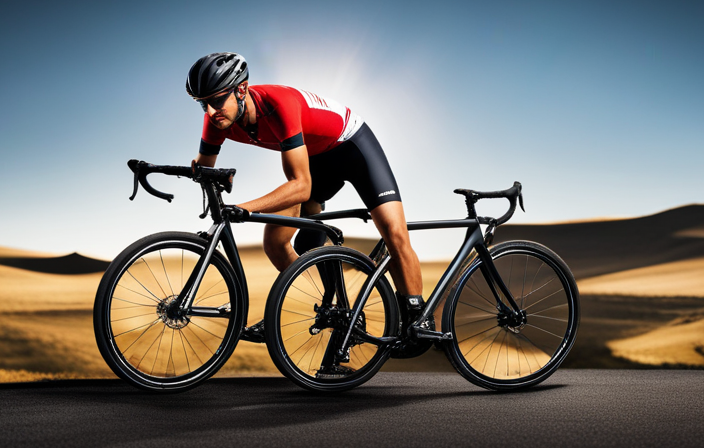
Are you ready to tackle challenging gravel bike trails? Hang onto your handlebars as I unveil the key to a smooth ride: getting the right size.
It’s not just about guessing or settling for what’s available – it’s about finding that harmonious balance between you and your machine. In this article, I’ll guide you through the precise steps of measuring, calculating, and fine-tuning every aspect of your gravel bike’s size for an optimized riding experience.
Get ready to take control of your adventure like never before!
Key Takeaways
- Proper sizing affects comfort, performance, and riding experience.
- Measure inseam length for accurate frame size.
- Reach, stack height, and top tube length fine-tune bike fit.
- Test ride different sizes to find the best fit.
Understand the Importance of Proper Sizing
You need to understand the importance of proper sizing when choosing a gravel bike. The right fit can greatly affect your comfort, performance, and overall riding experience. Bike fit is crucial because it ensures that you are in the correct position to maximize power transfer and minimize strain on your body.
One of the most common sizing mistakes people make is choosing a bike based solely on their height. While height can give you a general idea of frame size, it doesn’t account for individual proportions such as inseam length or torso length. A bike that is too small or too large can lead to discomfort, pain, and reduced efficiency.
To ensure proper sizing, start by measuring your inseam length. This measurement will help determine the appropriate frame size for your gravel bike. Stand with your feet shoulder-width apart and measure from the floor to your crotch. With this measurement in hand, consult a size chart provided by the manufacturer or visit a professional bike fitter who can guide you in selecting the right frame size for your specific measurements.
Now that we understand the importance of proper sizing, let’s move on to how to measure your inseam length accurately without any guesswork.
Measure Your Inseam Length
To accurately measure your inseam length, start by standing barefoot against a wall. Place a book between your legs, pressing it firmly against your groin. Make sure the spine of the book is parallel to the floor. Have someone measure from the top of the book down to the ground using a measuring tape or ruler. This measurement will give you an accurate inseam length.
Once you have determined your inseam length, you can use it as a starting point for finding the right size gravel bike. Bike fit is crucial for comfort and efficiency while riding, so taking accurate measurements is essential.
When considering bike sizing, keep in mind that different brands and models may have slightly different sizing charts. It’s important to consult each manufacturer’s guidelines to find the best fit for you.
Now that you have measured your inseam length, it’s time to consider your riding style and terrain. This will help determine other aspects of bike fit such as top tube length and handlebar height. By taking these factors into account along with your inseam measurement, you can ensure that your gravel bike is properly sized for optimal performance on any ride.
Consider Your Riding Style and Terrain
Considering your riding style and the type of terrain you will be encountering is crucial when determining the right fit for your gravel bike. Your riding style will directly affect your position on the bike, which in turn impacts comfort and efficiency. If you prefer a more aggressive riding position with a lower handlebar height, you may want to consider a smaller frame size. On the other hand, if you prefer a more relaxed and upright position, a larger frame size would be more suitable.
The type of terrain you plan to ride on also plays a significant role in determining the appropriate sizing for your gravel bike. If you anticipate tackling rough and technical off-road trails, a smaller frame size with a shorter wheelbase can provide better maneuverability. However, if long-distance endurance rides or smooth gravel roads are more your style, a larger frame size with increased stability may be preferred.
When considering bike fit and sizing charts, it’s important to note that each manufacturer might have slight variations in their measurements. Take the time to review specific sizing charts provided by different brands to ensure an accurate fit for your body proportions.
In the subsequent section about determining your frame size, we will dive deeper into calculating specific measurements based on your inseam length and other factors.
Determine Your Frame Size
Taking into account your body proportions and riding preferences is essential when determining the right fit for your gravel bike. One of the key factors in finding the correct frame size is measuring your inseam accurately. To do this, stand barefoot against a wall with your legs slightly apart and place a book between your legs, snug against your crotch. Measure from the top of the book to the floor to get an accurate inseam measurement.
Once you have your inseam measurement, you can use it to choose the correct frame size for your gravel bike. Most manufacturers provide sizing charts that correlate inseam measurements with recommended frame sizes. These charts take into consideration factors such as seat tube length and top tube length to ensure a proper fit.
It’s important to note that different manufacturers may have slightly different sizing conventions, so be sure to consult each manufacturer’s specific sizing chart for accurate results. Additionally, keep in mind that there may be some variations depending on personal preference and riding style.
Now that you have determined your frame size based on your inseam measurement, let’s move on to the next step: taking into account reach and stack height when choosing the right gravel bike for you.
Take into Account Reach and Stack Height
Once you know your frame size, it’s important to consider the reach and stack height to ensure a comfortable fit for your riding style. The reach refers to the horizontal distance between the bottom bracket and the top of the head tube, while the stack height is the vertical distance between these two points. Proper reach and stack height are crucial in bike sizing because they directly affect your riding position and overall comfort on the bike.
When determining reach and stack height for gravel biking, there are several factors to consider. Firstly, your body proportions play a significant role. Longer arms may require a longer reach, while shorter arms may necessitate a shorter one. Additionally, considering your flexibility is important as well. If you have limited flexibility, opting for a higher stack height can alleviate strain on your back and neck.
To help you visualize how reach and stack height impact your riding experience, here is a table:
| Reach | Stack Height |
|---|---|
| Longer Reach | Higher Stack Height |
| Shorter Reach | Lower Stack Height |
| Increased Comfort | Decreased Discomfort |
| Optimal Riding Position | Reduced Strain |
Considering the top tube length will further fine-tune your bike fit in relation to your individual needs. By ensuring proper reach, stack height, and top tube length, you’ll be one step closer to finding that perfect gravel bike fit.
Consider the Top Tube Length
The top tube length is an important factor to consider when finding the right fit for your riding style and body proportions. It plays a crucial role in determining your overall comfort and control on the bike. When considering the top tube length, it’s essential to take into account both the reach and stack height measurements.
The reach measurement refers to the distance from the center of the bottom bracket to the top of the head tube. It determines how stretched out or upright you will be on the bike. A shorter top tube length will result in a more relaxed and upright position, while a longer one will provide a more aggressive and aerodynamic stance.
On the other hand, stack height measures how high or low your handlebars are relative to your saddle. A higher stack height can lead to a more comfortable and relaxed riding position, ideal for long-distance rides or endurance events.
When considering these factors, it’s also crucial to check the standover height, which is how much clearance you have when standing over your bike with both feet flat on the ground. This ensures that you can easily dismount and maneuver your bike without any discomfort or restrictions.
Considering all these aspects will help you find a gravel bike with an optimal top tube length that suits your body proportions, riding style, and preferences. Now let’s move on to checking the standover height…
Check the Standover Height
Make sure you check the standover height to ensure comfortable dismounting and maneuvering when both feet are flat on the ground. Standover clearance refers to the amount of space between your crotch and the top tube of the bike frame when you straddle it. To measure this, stand with your feet shoulder-width apart and wear the shoes you plan to ride in. Lift one leg slightly and swing it over the bike as if mounting or dismounting.
The ideal standover clearance is about 2-3 inches for road bikes, but gravel bikes may require more due to their off-road nature. A higher standover clearance allows for easier handling and control on rough terrain.
When considering sizing options, make sure there is enough room between your inseam and the top tube while maintaining a proper riding position. Some manufacturers offer multiple frame sizes with different standover heights, so choose one that suits your body proportions best.
To test ride different sizes, visit a local bike shop or participate in demo events organized by manufacturers or cycling clubs. This will give you a better understanding of how each size feels under real riding conditions before making a final decision on which size gravel bike to purchase.
Test Ride Different Sizes
When you test ride different sizes, it gives you a better understanding of how each one feels under real riding conditions before you make a final decision on which size to purchase. This test ride experience is crucial in determining the optimal fit for your gravel bike.
Here are some key points to consider during your test ride:
-
Comfort: Pay attention to how comfortable you feel on each size. Does the bike feel too big or too small? A proper fit should allow for easy maneuverability and control.
-
Stability: Notice how stable the bike feels when riding at various speeds and on different terrains. A well-sized bike will provide a balanced and confident riding experience.
-
Handling: Test the bike’s responsiveness when cornering or navigating tight spaces. The right size should offer precise handling without feeling twitchy or sluggish.
-
Power Transfer: Observe how efficiently your pedaling power is transferred to the wheels. An optimal fit will maximize energy transfer, allowing you to ride more efficiently.
By test riding different sizes, you can gather valuable insights into how each option performs and find the best fit for your needs.
Once you have identified a few potential sizes, it’s time to consult with a professional bike fitter who can provide further guidance in selecting the perfect size for your gravel bike setup.
Consult with a Professional Bike Fitter
Consider consulting with a professional bike fitter to ensure the optimal fit for your gravel bike setup. A bike fit assessment conducted by a trained expert can provide valuable insights into your body’s biomechanics and help determine the ideal frame size, stem length, handlebar width, and saddle position for you. Professional bike fitting services are equipped with specialized tools and expertise to analyze your riding style, flexibility, and any potential imbalances or discomfort you may experience on the bike.
During a professional bike fit session, the fitter will take various measurements of your body proportions and assess your range of motion. They may also observe your pedaling technique to identify any areas that need improvement. Based on this comprehensive analysis, they will make precise adjustments to optimize your position on the gravel bike.
By consulting with a professional bike fitter, you can avoid common pitfalls like choosing a frame size that is too small or large for you, which could lead to discomfort or decreased performance. Additionally, they can recommend appropriate components such as saddles or handlebars that suit your individual needs.
Once you have completed the initial assessment and received recommendations from the professional fitter, it is time to consider adjustments and components that will further enhance your gravel biking experience.
Consider Adjustments and Components
To enhance your experience, you could explore different adjustments and components for your gravel biking setup. When it comes to bike fit, there are a few key areas to consider.
First, saddle position is crucial for comfort and power transfer. Make sure your saddle height is set correctly so that your legs can fully extend with a slight bend at the knee when the pedal is at its lowest point. Additionally, the fore-aft position of the saddle should be adjusted to achieve proper weight distribution between the front and rear wheels.
Next, handlebar width and reach can greatly affect your riding comfort and control. Experiment with different handlebar widths to find the one that feels most natural for you. You may also want to consider adjusting the stem length to achieve a comfortable reach to the handlebars.
In terms of components, selecting tires that suit your riding style and terrain is essential for optimal performance. Consider choosing wider tires with more aggressive tread patterns for off-road adventures, while opting for narrower tires with smoother tread patterns if you plan on spending more time on pavement.
Taking note of the bike’s geometry is crucial in ensuring a proper fit. The frame geometry determines factors such as stack height (vertical distance from bottom bracket to top of head tube) and reach (horizontal distance from bottom bracket to top of head tube). These measurements play a significant role in determining how comfortable you will be on long rides or during technical sections.
Transitioning into taking note of the bike’s geometry in order to properly size your gravel bike, it’s important to understand how these frame measurements can impact your overall riding experience.
Take Note of the Bike’s Geometry
Now that we have considered adjustments and components, let’s move on to the next important aspect of properly sizing a gravel bike: taking note of the bike’s geometry.
Bike fit is crucial for comfort, efficiency, and overall performance, so it’s essential to understand how the geometry of a bike can affect your riding experience.
Here are some important factors to consider when evaluating the bike’s geometry:
-
Frame Size: The frame size determines the overall fit of the bike. It should be proportional to your body measurements and allow for proper reach and standover height.
-
Top Tube Length: This measurement affects your riding position and comfort. A longer top tube provides a more stretched-out position, while a shorter one offers a more upright stance.
-
Head Tube Angle: The head tube angle influences steering responsiveness and stability. Steeper angles provide quicker handling, while shallower angles offer stability at higher speeds.
-
Bottom Bracket Drop: This measurement impacts pedal clearance during cornering and affects how low you feel on the bike.
By considering these aspects of the bike’s geometry, you can ensure a better fit and an optimal riding experience.
Now let’s move on to our next topic where we will discuss why it is important to consider the bike’s wheel size.
Consider the Bike’s Wheel Size
Take note of the wheel size on the bike to ensure a comfortable and enjoyable ride. The wheel diameter plays a crucial role in determining how the bike performs on different surfaces. For gravel biking, it is common to see wheel sizes ranging from 650b to 700c.
Smaller wheels, like the 650b, offer better maneuverability and acceleration while sacrificing some top-end speed. On the other hand, larger wheels, such as the standard 700c, provide better stability and roll over obstacles more easily.
Another important factor to consider is tire clearance. Gravel bikes are designed with wider tire clearances compared to road bikes. This allows for fitting tires with more tread and larger volume, which improves traction and comfort on rough terrains. When choosing a wheel size, make sure it accommodates your desired tire width without any clearance issues.
Considering both wheel size and tire clearance will help you find the right balance between agility and stability for your gravel bike adventures. In the next section about handlebar width, we will explore another aspect that contributes to a well-sized gravel bike setup.
Without compromising on performance or comfort…
Consider the Bike’s Handlebar Width
Ensure that your handlebar width suits your riding style and preferences for a comfortable and controlled experience.
When it comes to bike fit, handlebar comfort is crucial. Here are some factors to consider when determining the right handlebar width:
-
Shoulder Width: Your handlebars should be slightly wider than your shoulder width. This allows for better control and stability while riding.
-
Riding Style: Different riding styles require different handlebar widths. For example, if you prefer an aggressive riding position, narrower handlebars may be more suitable. On the other hand, if you enjoy long-distance rides or gravel adventures, wider handlebars provide better stability.
-
Maneuverability: Wider handlebars offer increased leverage, making it easier to maneuver through technical terrain or tight corners.
-
Comfort: Handlebar width can affect your overall comfort on the bike. It’s important to find a width that allows for relaxed hand positioning without strain or discomfort.
Finding the optimal handlebar width requires considering these factors along with personal preference. Once you have determined the appropriate handlebar width, you can move on to evaluating the bike’s stem length in order to achieve a well-balanced setup.
Consider the Bike’s Stem Length
Choosing the right stem length is crucial for achieving a well-balanced setup on your bike. When it comes to gravel biking, finding the optimal stem length can greatly affect your comfort, control, and overall riding experience. The stem connects the handlebars to the fork steerer tube, determining your reach and position on the bike.
To choose the right stem length for your gravel bike, you need to consider various factors such as your body measurements, riding style, and personal preferences. A shorter stem provides quicker handling and more responsive steering, ideal for technical terrains or aggressive riding. On the other hand, a longer stem offers more stability and less twitchy handling, suitable for long-distance endurance rides.
Adjusting the stem angle can also help fine-tune your fit on the bike. By angling it up or down slightly, you can modify your riding position and alleviate strain on your back or wrists. It’s essential to experiment with different angles until you find what feels most comfortable for you.
Once you have chosen the right stem length and adjusted its angle accordingly, you can further fine-tune the fit with saddle and handlebar adjustments. These additional adjustments will ensure that all components work together harmoniously to provide an ergonomic and efficient riding experience.
Transitioning into adjusting saddle and handlebar positions allows riders to optimize their setup without compromising comfort or performance.
Fine-Tune the Fit with Saddle and Handlebar Adjustments
To optimize your riding experience, it’s important to make adjustments to the saddle and handlebar positions. Fine-tuning these elements will ensure a comfortable and efficient ride on your gravel bike.
Let’s start with the saddle position. Finding the right height is crucial for proper leg extension and power transfer. Start by sitting on the saddle with one foot at the bottom of the pedal stroke. Your knee should have a slight bend, around 25-30 degrees. Adjust accordingly until you achieve this angle.
Next, let’s focus on handlebar height. This adjustment affects both comfort and control. Begin by loosening the stem bolts and raising or lowering the handlebars to your desired position. Keep in mind that a higher handlebar offers a more upright riding posture, which can be beneficial for long rides or those seeking greater comfort. Conversely, a lower handlebar promotes an aerodynamic position suitable for faster-paced riding.
Once you’ve made these adjustments, take some time to test out your new setup on various terrains. Pay attention to any discomfort or strain in your back, neck, or wrists – these are signs that further adjustments may be necessary.
Remember, finding the ideal saddle position and handlebar height is essential for achieving optimal performance and preventing injuries while enjoying your gravel bike adventures!
Frequently Asked Questions
What are the benefits of consulting with a professional bike fitter?
Consulting with a professional bike fitter offers numerous benefits. Firstly, they possess the expertise to ensure proper bike sizing, which is crucial for optimal performance and comfort. Through their precise measurements and analysis, they can identify any issues that may impact your riding experience.
Additionally, a professional bike fitting can help prevent injuries by ensuring correct body alignment and reducing strain on joints. Overall, the importance of proper bike sizing cannot be overstated, making a consultation with a professional bike fitter invaluable.
How does the bike’s geometry impact the sizing process?
The bike’s geometry plays a crucial role in the bike fit and sizing process. It determines how the bike will handle, its stability, and comfort. A slight change in geometry can have a significant impact on your riding experience.
Factors like head tube angle, top tube length, and seat tube angle all affect how you fit on the bike. Therefore, understanding the geometry is essential for finding the right size and achieving optimal performance.
What factors should I consider when choosing the bike’s wheel size?
When considering wheel size for a gravel bike fit, there are several important factors to take into account.
Firstly, the terrain you’ll be riding on plays a crucial role. Smaller wheels provide nimbleness and agility, while larger wheels offer better momentum and stability over rough surfaces.
Additionally, tire clearance is essential as wider tires require larger wheel sizes.
Lastly, personal preference and riding style should also influence your decision on wheel size considerations for optimal gravel bike fit.
How does the bike’s handlebar width affect the overall fit?
The handlebar width plays a crucial role in bike fit. It symbolizes control and comfort while riding.
A wider handlebar provides better stability and control, especially on rough terrains. However, it may affect aerodynamics and maneuverability.
On the other hand, a narrower handlebar allows for more precise steering and improved aerodynamics.
Finding the right balance between these factors is essential to ensure an optimal bike fit and enhance your overall riding experience.
What adjustments can be made to the saddle and handlebars for a more customized fit?
To achieve a more customized fit on a gravel bike, adjustments can be made to the saddle height and handlebar reach.
The saddle height refers to the vertical position of the seat, which affects leg extension and power output. By adjusting the saddle height correctly, optimal pedaling efficiency can be achieved.
Handlebar reach refers to the horizontal distance between the saddle and handlebars. Adjusting this allows for a comfortable riding position and proper weight distribution on the bike.
Conclusion
In conclusion, properly sizing a gravel bike is crucial for a comfortable and efficient riding experience. By measuring your inseam length and considering your riding style and terrain, you can determine the appropriate frame size that suits you.
Additionally, taking into account factors such as reach and stack height, wheel size, handlebar width, stem length, and fine-tuning the fit with saddle and handlebar adjustments will ensure a customized fit.
Remember that 90% of cyclists who ride bikes that are too big or small experience discomfort or pain. Therefore, investing time in finding the right size is essential for an enjoyable gravel biking journey.
Olivia’s writing is not only informative but also inspiring. She has a knack for telling stories that capture the essence of cycling and the joy it brings to people’s lives. Her writing has been praised by readers and industry experts alike for its clarity, depth, and authenticity.
In addition to her writing, Olivia is also an avid cyclist. She enjoys exploring new trails and routes and has participated in several cycling events and races. Her first-hand experience with cycling gives her a unique perspective on the sport, reflected in her writing.
Overall, Olivia is a talented writer passionate about cycling and dedicated to producing high-quality content for FlatironBike. Her contributions to the magazine have helped make it a go-to source for cycling enthusiasts worldwide.
Gravel Bike
Mountain Bike Tire Pressure When Riding On Gravel Roads
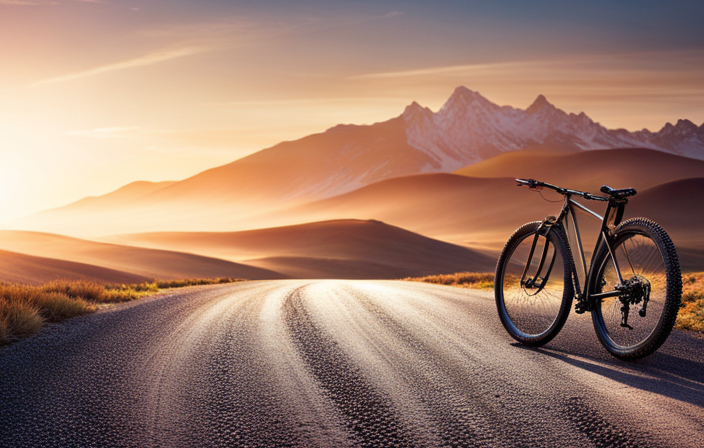
Riding on gravel trails can be an exciting experience. However, it is important to pay attention to your mountain bike’s tire pressure in order to navigate the uneven terrain safely. Just like a tightrope walker on a thin wire, maintaining the perfect balance is essential for achieving peak performance and control.
In this article, we delve into the intricate world of tire pressure, exploring its impact on gravel riding. We provide you with valuable insights to help you conquer any off-road challenge with confidence.
So grab your helmet and let’s dive into the fascinating realm of mountain bike tire pressure on gravel roads!
Key Takeaways
- Adjusting tire pressure based on factors like rider weight and terrain conditions enhances comfort and stability.
- Wider tires with higher volume provide improved stability and traction on gravel roads.
- Lower tire pressures increase grip and control during cornering.
- Finding the right tire pressure for specific conditions ensures control and stability.
Understanding the Basics of Tire Pressure
You should understand the basics of tire pressure before riding on gravel roads. Tire pressure plays a crucial role in determining your bike’s performance and safety on different terrains.
When it comes to road biking, there are specific tire pressure recommendations that you can follow. Generally, higher tire pressures are recommended for smoother pavement surfaces, as they provide lower rolling resistance and better efficiency. However, when riding on gravel roads, lower tire pressures are typically preferred.
Understanding the effects of tire pressure on cornering is essential for safe navigation on gravel roads. Lower tire pressures allow for a larger contact patch between the tire and the road surface, increasing traction and grip while cornering. This increased grip helps to prevent sliding or skidding, ensuring better control over your bike.
Transitioning into factors affecting tire pressure on gravel roads, it is important to consider various elements such as rider weight, terrain conditions, and personal preference. These factors influence the optimal tire pressure that you should use when riding off-road.
By properly adjusting your tire pressure based on these factors, you can enhance your comfort, stability, and overall performance while tackling challenging gravel roads without sacrificing control or jeopardizing your safety.
Factors Affecting Tire Pressure on Gravel Roads
When it comes to tire pressure on gravel roads, there are three key factors that come into play: tire width and volume, rider weight, and riding style, as well as the terrain and surface conditions.
Tire width and volume determine the amount of air in the tires, affecting both stability and traction.
Rider weight plays a role in determining how much pressure is needed to support the bike on uneven surfaces.
Finally, the terrain and surface conditions impact tire pressure by influencing how much grip is needed for optimal performance.
It’s important to consider all these factors when adjusting tire pressure for a smooth and safe ride on gravel roads.
Tire Width and Volume
With increased tire width and volume, riders can experience improved stability and traction when riding on gravel roads. When it comes to tire pressure for wet conditions, wider tires with higher volume allow for lower pressures, which increase the contact patch with the ground and enhance grip. This is crucial in wet conditions where maintaining control is essential.
On the other hand, when riding on sandy terrain, narrower tires with lower volume and higher pressures are preferred to prevent sinking into the loose surface. These tires cut through the sand more efficiently and provide better maneuverability. However, it’s important to note that finding the optimal tire pressure involves a balance between stability, traction, and comfort based on individual rider weight and riding style.
Adjusting tire pressure according to these factors will ensure a smoother ride while tackling gravel roads.
Transitioning into the subsequent section about ‘rider weight and riding style’, it is crucial to consider these aspects as they greatly influence tire performance on different surfaces.
Rider Weight and Riding Style
Consider your weight and riding style as factors that significantly impact the performance of your tires on various surfaces. When it comes to adjusting tire pressure for downhill rides, it is crucial to find the right balance between grip and rolling resistance. Higher pressures provide better rolling efficiency but can decrease traction, while lower pressures increase grip but may result in higher rolling resistance. A general rule of thumb is to reduce tire pressure by 2-3 psi when descending, allowing for more contact with the ground and improved control. On the other hand, cornering requires a different approach. Higher tire pressures help prevent sidewall collapse and maintain stability during aggressive turns. It’s important to experiment with different pressures based on personal preference and terrain conditions to find what works best for you. Taking these factors into account will ensure optimal performance when riding on gravel roads.
Moving forward, let’s delve into how terrain and surface conditions further influence our tire pressure choices without compromising safety or ride quality.
Terrain and Surface Conditions
The type of surface you’re riding on can greatly impact the optimal tire pressure for your ride. When it comes to gravel roads, understanding the terrain and surface conditions is crucial in determining the right tire pressure. Gravel road maintenance plays a significant role in how bumpy or smooth the surface is. If the gravel has been recently graded and compacted, you may be able to run slightly higher tire pressures to increase efficiency and reduce rolling resistance. However, if the gravel road is wet or loose, lower tire pressures are recommended to improve traction and prevent sliding.
Wet gravel can be especially tricky as it tends to create a slippery surface that requires more grip from your tires. Finding the right tire pressure for these specific conditions is essential for maintaining control and stability while riding on gravel roads.
Transitioning into the subsequent section about the importance of finding the right tire pressure: It’s important to understand that finding the right tire pressure not only depends on terrain and surface conditions but also factors such as rider weight, riding style, and personal preferences.
Importance of Finding the Right Tire Pressure
To find the right tire pressure for riding on gravel roads, it is important to understand the importance of having the correct amount of air in your tires. Finding optimal tire pressure is crucial as it directly affects your performance and overall ride experience. Adjusting pressure based on different terrain and surface conditions can greatly enhance your bike’s handling capabilities.
Here are three factors to consider when finding the right tire pressure for gravel road riding:
-
Traction: Maintaining adequate tire pressure ensures better traction on loose surfaces like gravel. Lower pressures allow the tire to conform to irregularities in the road, increasing grip and reducing slippage.
-
Comfort: Adjusting your tire pressure can significantly impact ride comfort. Higher pressures result in a stiffer ride, transmitting more vibrations from rough terrains. Lower pressures absorb these vibrations, providing a smoother journey.
-
Rolling Resistance: Tire pressure affects rolling resistance, which influences speed and efficiency while pedaling on gravel roads. Higher pressures reduce rolling resistance by minimizing tire deformation, enabling faster speeds with minimal effort.
Understanding these factors will help you fine-tune your mountain bike’s tire pressure for optimal performance on gravel roads. The relationship between tire pressure and performance is intricate and deserves careful consideration when seeking an enjoyable off-road cycling experience.
The Relationship Between Tire Pressure and Performance
When it comes to mountain biking, finding the right tire pressure is crucial for optimal performance. The relationship between tire pressure and performance can be seen in three key areas: traction and grip, rolling resistance, and comfort and control.
Maintaining the proper tire pressure ensures maximum traction and grip on various terrains. It reduces rolling resistance for a smoother ride and enhances overall comfort and control while riding.
Traction and Grip
Riding with lower tire pressure on gravel roads increases traction and grip. When the tire pressure is lower, the tire conforms better to the uneven surface of the gravel road, allowing for more contact points between the tire and the ground. This increased contact improves traction and stability, enabling me to maintain control and balance even on loose or slippery surfaces. The added grip gives me confidence in my bike’s handling capabilities, especially during cornering or braking maneuvers.
Lower tire pressure also helps in absorbing vibrations from rough terrain, reducing fatigue and providing a smoother ride. However, it is important to find a balance as too low of a tire pressure can lead to pinch flats or sidewall damage.
Transitioning into the next section about rolling resistance, maintaining optimal tire pressure not only improves traction but also affects how efficiently I can roll over gravel roads without expending excessive energy.
Rolling Resistance
Lowering tire pressure on gravel roads increases rolling resistance, making it more difficult to maintain speed and momentum.
When riding on gravel, the increased traction and grip provided by lower tire pressure can be beneficial, but it comes at a cost. The lower pressure causes the tires to deform more as they roll over the uneven surface, resulting in increased friction between the tires and the ground. This extra resistance slows down the bike and requires more effort from the rider to maintain speed.
Additionally, lower tire pressure can also affect puncture resistance. With less air in the tires, there is a higher risk of pinch flats or snake bites when hitting sharp rocks or potholes.
Therefore, finding an optimal balance between lower tire pressure for traction and grip while still maintaining sufficient rolling resistance is crucial for achieving both comfort and control on gravel roads without sacrificing speed or puncture protection.
Comfort and Control
Finding the right balance between traction and grip while still maintaining sufficient rolling resistance is crucial for achieving comfort and control on gravel roads.
When it comes to mountain bike tire pressure, there are a few factors to consider. For downhill trails, a lower tire pressure can provide increased traction and better handling on steep descents. This allows the tires to deform around obstacles, maximizing grip.
On the other hand, riding in wet conditions calls for slightly higher tire pressure to prevent excessive sinking into soft terrain and to improve mud shedding capabilities.
It’s important to find the sweet spot that offers enough cushioning for a comfortable ride while maintaining control over the bike. Determining the ideal tire pressure involves considering factors such as rider weight, trail conditions, and personal preference.
By finding this balance, riders can enjoy optimal comfort and control on gravel roads without compromising performance or safety.
How to Determine the Ideal Tire Pressure
To determine the ideal tire pressure for riding on gravel roads, it’s important to consider factors such as terrain and rider weight. By finding the right balance, you can optimize comfort and control during your off-road adventures. Determining pressure involves understanding how different tire pressures affect performance on gravel surfaces.
| Terrain Type | Rider Weight | Ideal Tire Pressure |
|---|---|---|
| Loose Gravel | Light | 30-35 psi |
| Medium | 35-40 psi | |
| Heavy | 40-45 psi | |
| Packed Gravel | Light | 25-30 psi |
| Medium | 30-35 psi | |
| Heavy | 35-40 psi | |
| Rough Gravel | Light | 20-25 psi |
| Medium | 25-30 psi | |
| Heavy | 30-35 psi |
Maintaining tire pressure is crucial for optimal performance. Regularly check your tires using tools like a digital pressure gauge or a floor pump with an integrated gauge. Adjust the pressure according to the conditions you will be riding in, ensuring that you have enough traction without sacrificing too much comfort.
Moving forward into the section about tools and techniques for checking tire pressure, it’s essential to ensure accurate readings to maintain peak performance while exploring gravel roads.
Tools and Techniques for Checking Tire Pressure
When it comes to checking tire pressure, there are a few tools and techniques that I rely on.
First, using a pressure gauge is essential for precise measurements. It allows me to accurately determine the exact pressure of my tires.
Second, feeling for tire firmness can also be helpful, as I can quickly assess if the tires need more or less air based on how they feel when pressed with my hand.
Lastly, if I am using tubeless tires, I make sure to regularly check and replenish the tubeless sealant to ensure optimal performance and prevent any potential leaks.
These tools and techniques help me maintain the ideal tire pressure for a smooth and efficient ride.
Using a Pressure Gauge
Check your pressure gauge to ensure that you have the correct tire pressure for riding on gravel roads. Accuracy is crucial when using a pressure gauge, so it’s important to choose a high-quality one. Cheaper gauges may not provide accurate readings, leading to incorrect tire pressures. To check the accuracy of your gauge, compare its reading with that of another reliable gauge or use an alternative method such as a digital gauge or an air compressor with a built-in pressure display.
Once you have confirmed the accuracy of your gauge, it’s time to measure the tire pressure. Attach the gauge securely onto the valve stem and press down firmly until you hear a hiss indicating that air has been released into the gauge. The reading will show you the current tire pressure in PSI (pounds per square inch).
With this information, you can now assess whether your tires are properly inflated for riding on gravel roads. Transitioning into feeling for tire firmness allows for another practical way of checking if your tire pressures are suitable for off-road conditions without relying solely on numbers and gauges.
Feeling for Tire Firmness
Assessing the firmness of your tires by applying pressure with your hand will help determine if they are suitable for off-road conditions. When riding on gravel roads, it is crucial to have the right tire pressure to ensure optimal performance and prevent any mishaps. To accurately assess tire firmness, follow these tire pressure troubleshooting techniques:
| Firmness Level | Description | Suitable for Off-Road? |
|---|---|---|
| Too Soft | Tire feels excessively squishy and can bottom out easily on rough terrain. | No |
| Ideal Firmness | Tire feels slightly firm but still provides enough cushioning for a smooth ride. | Yes |
| Overinflated | Tire feels overly hard, resulting in reduced traction and a harsh ride. | No |
By feeling for tire firmness using this method, you can quickly identify if adjustments need to be made to your tire pressure before heading out on gravel roads. Next, we will explore the importance of using tubeless sealant in maintaining optimal tire performance.
Using Tubeless Sealant
Using tubeless sealant is essential for maintaining optimal performance of your tires. When applying tubeless sealant, there are several benefits that come along with it.
- Increased puncture resistance: The sealant fills small holes and punctures as they occur, preventing air leakage and flat tires.
- Enhanced traction: Tubeless tires allow for lower tire pressures, increasing grip on loose gravel surfaces.
- Improved rolling efficiency: With the absence of inner tubes, friction is reduced, resulting in a smoother and faster ride.
- Self-sealing properties: The sealant automatically seals punctures while riding, minimizing the need for immediate repairs.
- Weight reduction: Eliminating inner tubes reduces overall weight, making your bike more agile and responsive.
By understanding the application process and appreciating the benefits of using tubeless sealant, you can ensure a hassle-free gravel riding experience.
Now let’s delve into some tips for adjusting tire pressure on the go.
Tips for Adjusting Tire Pressure on the Go
When riding on gravel roads, it’s important to be able to adjust tire pressure on the go. This skill becomes crucial when facing steep descents or navigating through wet conditions. Adjusting tire pressure correctly can greatly enhance your performance and ensure a safer ride.
When tackling steep descents, lowering your tire pressure can improve traction and control. By reducing the air volume in your tires, you increase the contact patch with the ground, allowing for better grip on loose gravel surfaces. It’s essential to find the right balance between low enough pressure for traction and high enough pressure to avoid pinch flats.
In wet conditions, adjusting tire pressure is equally important. Lowering your tire pressure slightly will provide more surface area contact with the ground, increasing traction and reducing the chances of slipping or sliding. However, be mindful not to go too low as this may result in decreased stability and an increased risk of punctures from sharp rocks or debris.
As you venture into different terrains, always remember that adjusting tire pressure is a continuous process that requires observation and experimentation. It’s crucial to monitor how your bike performs under varying conditions and fine-tune accordingly.
Transitioning into common mistakes to avoid when adjusting tire pressure…
Common Mistakes to Avoid
When it comes to adjusting tire pressure on the go, there are a few common mistakes that should be avoided.
One of these is overinflating or underinflating the tires, which can negatively impact performance and handling on gravel roads.
Another mistake is ignoring changing conditions, such as changes in terrain or weather, which can greatly affect tire pressure needs.
Lastly, neglecting regular maintenance, such as checking tire pressure before each ride and ensuring proper tire condition, can lead to potential issues while riding on gravel roads.
Overinflating or Underinflating
If you’re not careful, overinflating or underinflating your mountain bike tires can lead to a less enjoyable ride on gravel roads.
Overinflating your tires can be dangerous as it reduces the contact patch between the tire and the ground, resulting in decreased traction. This lack of traction can make it difficult to maintain control and navigate through loose gravel, leading to a higher risk of accidents.
On the other hand, underinflating your tires can have its disadvantages too. It increases rolling resistance and makes pedaling harder, causing unnecessary fatigue. Moreover, underinflation reduces stability and maneuverability, making it more challenging to handle your bike on uneven surfaces.
So finding the right tire pressure for riding on gravel roads is crucial for an optimal cycling experience. Ignoring changing conditions such as varying terrains or weather conditions can also impact your ride in unexpected ways.
Ignoring Changing Conditions
Ignoring changing conditions, such as varying terrains or weather, can impact your ride on gravel roads in unexpected ways. Adjusting pressure according to the conditions is crucial for maintaining control and maximizing performance. Here are some key considerations for tire pressure maintenance:
- Tire Width: Wider tires require lower pressure to increase grip and stability on rough surfaces.
- Terrain Type: Decrease pressure for loose gravel to enhance traction, while increasing pressure on hard-packed gravel minimizes rolling resistance.
- Weather Conditions: Lower pressure in wet conditions improves traction, but higher pressure may be needed in dry conditions to prevent pinch flats.
- Rider Weight: Heavier riders should increase tire pressure to avoid bottoming out.
- Personal Preference: Experiment with different pressures to find what works best for you.
By adjusting tire pressure accordingly, you can ensure a smoother and safer ride on gravel roads. Neglecting regular maintenance, including tire pressure adjustments, can lead to further issues down the line.
Neglecting Regular Maintenance
Make sure you don’t neglect regular maintenance to avoid potential issues down the line.
When riding on gravel roads, it is crucial to adjust your tire pressure according to the conditions you encounter. Wet conditions, for example, require a lower tire pressure to increase traction and prevent sliding. Adjusting your tire pressure can greatly impact your cornering performance as well.
Lower pressures allow the tires to conform better to uneven surfaces, providing more grip when navigating turns. Neglecting regular maintenance can lead to improper tire pressure, which in turn can affect your handling and control on gravel roads.
Maintaining proper tire pressure ensures optimal performance and safety while riding off-road. It’s important not only for cornering but also for overall comfort and efficiency on rough terrains.
Benefits of Proper Tire Pressure on Gravel Roads
To ensure a smooth and comfortable ride on gravel roads, it is important to maintain proper tire pressure. Determining the ideal pressure for your mountain bike tires on gravel can make a significant difference in your overall riding experience. Proper inflation offers several benefits that contribute to better performance and increased safety.
Firstly, maintaining the correct tire pressure allows for optimal traction on loose surfaces. Gravel roads can vary in terms of compactness and texture, but having the right amount of air in your tires ensures that they conform to the terrain, providing maximum grip. This prevents unnecessary skidding or sliding, allowing you to confidently navigate through gravel patches without losing control.
Additionally, riding with proper tire pressure helps absorb shocks and vibrations caused by rough terrain. With enough cushioning effect from properly inflated tires, you’ll experience less discomfort and fatigue during long rides on gravel roads. This means you can focus more on enjoying the scenery and less on dealing with jarring impacts.
Furthermore, maintaining accurate tire pressure enhances rolling efficiency. When your tires are inflated to their recommended levels, they roll smoothly over gravel surfaces with minimal resistance. This reduces energy wastage and enables you to cover longer distances effortlessly.
In conclusion, ensuring proper tire pressure when riding on gravel roads is crucial for a smooth and enjoyable experience. The benefits of determining the ideal pressure include improved traction, enhanced comfort, reduced fatigue, and increased efficiency while rolling over different types of gravel road surfaces. Now let’s delve into how to handle these various terrains effectively without compromising our ride quality.
How to Handle Different Gravel Road Surfaces
Navigating through different types of gravel road surfaces can be challenging, but with the right techniques, you can handle them effectively.
When it comes to riding on gravel roads, having the correct tire pressure is crucial. Different tire pressures are required for different types of gravel roads. For loose or sandy surfaces, a lower tire pressure is recommended to increase traction and prevent skidding. This allows the tires to grip the surface better and provides more stability. On the other hand, for compacted or hard-packed gravel roads, a higher tire pressure is necessary to reduce rolling resistance and maintain speed.
To handle loose or sandy surfaces, it is important to distribute your weight evenly on both wheels and keep a relaxed grip on the handlebars. This helps in maintaining balance and control over your bike as you navigate through these tricky terrains. Additionally, it is advisable to pedal smoothly without any sudden jerks or accelerations.
For compacted or hard-packed gravel roads, maintaining a steady speed can help in riding more efficiently. With higher tire pressure, there will be less resistance from the surface which allows for smoother pedaling and faster speeds.
Transitioning into adjusting tire pressure for different riding styles:
Now that we have discussed how to handle different gravel road surfaces effectively using appropriate techniques, let’s move on to another important aspect – adjusting tire pressure for different riding styles without compromising safety or performance.
Adjusting Tire Pressure for Different Riding Styles
Transitioning into adjusting tire pressure for different riding styles, it’s important to consider the terrain and your desired level of performance. When it comes to mountain bike suspension, choosing the right tire pressure is crucial. The amount of air in your tires directly affects how well your bike absorbs shocks and maintains traction on varying surfaces.
For riders who prefer a more aggressive style on gravel roads, lower tire pressures are recommended. This allows the tires to conform to the uneven surface, providing better grip and control. However, keep in mind that running too low of a pressure can increase the risk of pinch flats or rim damage.
On the other hand, if you prefer a faster-paced ride with less rolling resistance, higher tire pressures are suitable. This reduces the amount of tire deformation during contact with the ground, resulting in improved efficiency and speed. However, be cautious not to go too high as this may compromise traction and comfort.
To find the optimal tire pressure for your riding style, start by experimenting within a range recommended by your bike manufacturer or experienced riders. Fine-tune from there based on personal preferences and feedback from each ride.
Transitioning into the subsequent section about ‘tire pressure recommendations for various tire widths,’ it’s essential to understand how different widths affect overall performance without compromising safety or comfort.
Tire Pressure Recommendations for Various Tire Widths
When considering different tire widths, it’s important to understand the recommended tire pressures for optimal performance and safety. For wet conditions, it is generally recommended to lower the tire pressure slightly to increase traction. This allows the tire to conform better to the surface, improving grip and reducing the chances of slipping. However, it’s important not to go too low as this can lead to pinch flats or a loss of control.
On sandy terrain, a higher tire pressure is typically suggested. This helps prevent the tires from sinking into the sand and improves rolling efficiency. By maintaining a firmer contact with the ground, you’ll be able to navigate sandy areas more easily without getting bogged down.
It’s worth noting that these recommendations may vary depending on personal preference and riding style. Some riders may prefer slightly higher or lower pressures based on their own experiences and comfort levels.
In conclusion, adjusting your tire pressure according to different terrains can greatly enhance your riding experience. By following these recommendations for wet conditions and sandy terrain, you can optimize your performance while maintaining safety on your mountain bike rides.
Now let’s move on to some tips for maintaining optimal tire pressure on long rides.
Tips for Maintaining Optimal Tire Pressure on Long Rides
To maintain optimal tire pressure on long rides, it is important to regularly check and adjust the air in your tires. This is especially crucial when riding on gravel roads, as the terrain can be unpredictable.
Here are some tips to help you maintain the right tire pressure for a smooth and safe ride:
-
Check tire pressure before every ride: Use a reliable pressure gauge to ensure your tires are inflated to the recommended PSI. This will help prevent pinch flats and improve traction on rough surfaces.
-
Adjust tire pressure for wet conditions: When riding in wet conditions, it is advisable to slightly lower your tire pressure to increase grip. This will provide better traction and reduce the risk of sliding or skidding.
-
Maintain tire pressure on steep descents: When going downhill, it is crucial to have adequate tire pressure for stability and control. Lowering the air pressure slightly can enhance grip without compromising speed.
-
Monitor temperature changes: Tire pressure can fluctuate with temperature variations. If you notice significant changes, make necessary adjustments to maintain optimal performance.
-
Carry a portable pump or CO2 inflator: In case of unexpected drops in tire pressure during your ride, it is recommended to have a portable pump or CO2 inflator handy. This will allow you to quickly add air if needed.
By following these tips, you can ensure that your mountain bike tires maintain optimal performance throughout long rides.
Now let’s move on to troubleshooting common tire pressure issues without skipping a beat.
Troubleshooting Common Tire Pressure Issues
Maintaining optimal tire pressure on long rides is crucial for a smooth and enjoyable biking experience. However, there may be times when you encounter common tire pressure issues that need troubleshooting. Understanding how to address these problems can help you find the right tire pressure for your mountain bike on gravel roads.
One common issue is having too low or too high tire pressure. This can cause discomfort, reduced traction, and increased risk of flats. To troubleshoot this problem, you can refer to the following table:
| Tire Pressure Issue | Possible Cause | Solution |
|---|---|---|
| Low tire pressure | Poor inflation or small punctures | Inflate the tires to the recommended PSI or patch any punctures |
| High tire pressure | Over-inflation or hot weather | Release some air from the tires or wait for them to cool down |
By addressing these issues promptly, you can ensure a more comfortable and safer ride on gravel roads. Finding the right tire pressure is essential for optimal performance and control. It may require some trial and error to determine what works best for your specific riding style and terrain conditions.
In conclusion, troubleshooting tire pressure issues is an important part of maintaining an optimal biking experience on gravel roads. By understanding possible causes and solutions for low or high tire pressures, you can fine-tune your bike’s performance. Now let’s move on to our final thoughts and recommendations for mountain bike tire maintenance.
Final Thoughts and Recommendations
In conclusion, when it comes to riding on gravel roads, there are a few final thoughts and recommendations that can greatly enhance your biking experience.
One important consideration is adjusting tire pressure for wet conditions. Wet gravel roads can be slippery, so reducing tire pressure slightly can improve traction and prevent sliding. However, be careful not to lower the pressure too much as it may increase the risk of pinch flats or rim damage.
Another crucial aspect to consider is the impact of tire pressure on cornering performance. Higher tire pressures provide better stability and reduce rolling resistance on straightaways, but they can compromise cornering ability. Lowering the tire pressure slightly allows for increased contact patch with the ground, providing better grip during turns.
It’s essential to find a balance between comfort, traction, and performance when adjusting tire pressure for gravel road riding. Experimenting with different pressures and observing how your bike handles in various conditions will help you determine the optimal range for your specific needs.
Remember that these final thoughts and recommendations are based on general guidelines, but individual preferences may vary. So always trust your own judgment and make adjustments accordingly to ensure an enjoyable and safe biking experience on gravel roads.
Frequently Asked Questions
How does tire pressure affect the comfort of the ride on gravel roads?
When it comes to choosing the right tire pressure for different types of gravel surfaces, it’s important to consider the impact on bike handling and stability.
A lower tire pressure provides more comfort by absorbing bumps and vibrations on rough gravel roads. However, too low of a pressure can increase the risk of pinch flats or sidewall damage.
It’s crucial to find a balance that offers both comfort and sufficient support for optimal bike control and stability on various gravel terrains.
Can I use the same tire pressure for both front and rear tires when riding on gravel?
When it comes to tire pressure on gravel, one size does not fit all. Different types of gravel surfaces require different tire pressures for optimal performance.
Additionally, when participating in the demanding sport of gravel racing, it is crucial to adhere to recommended tire pressures to ensure both speed and control.
However, it is important to note that using the same tire pressure for both front and rear tires may not always be ideal, as individual preferences and riding styles can differ.
Are there any specific tire pressure recommendations for riding on wet gravel roads?
When riding on wet gravel roads, it’s important to adjust your tire pressure accordingly. The recommended tire pressure for different types of gravel surfaces can vary.
Generally, a slightly lower tire pressure is preferred for wet conditions to increase traction and prevent slippage. However, it’s crucial to strike a balance as too low of a tire pressure can lead to increased rolling resistance.
Experimenting with different pressures will help find the optimal setting for your specific riding conditions.
Does tire pressure affect the grip and traction on loose gravel surfaces?
Tire pressure plays a crucial role in off-road performance, akin to a tightrope walker’s balance on a thin rope. It greatly affects grip and traction on loose gravel surfaces.
Finding the optimal tire pressure for different gravel road conditions is key. Lower pressure increases contact area, enhancing grip but risking pinch flats, while higher pressure reduces traction.
Experimentation is necessary to strike the perfect balance and conquer those challenging gravel roads with confidence and control.
What are the signs that indicate I have too low or too high tire pressure when riding on gravel roads?
When it comes to the effects of tire pressure on mountain bike performance, finding the optimal tire pressure for gravel riding is crucial.
Riding with too low tire pressure on gravel roads can result in a sluggish and unstable ride, making it difficult to maintain control and reducing overall traction.
On the other hand, riding with too high tire pressure can lead to reduced grip and an uncomfortable ride.
It’s important to find the right balance by experimenting with different pressures based on your weight, terrain conditions, and personal preference.
Conclusion
In conclusion, understanding the importance of tire pressure when riding on gravel roads is crucial for optimal performance and safety.
By finding the right tire pressure and maintaining it throughout your ride, you can ensure a smooth and enjoyable experience.
While some may argue that monitoring tire pressure can be time-consuming or unnecessary, the benefits far outweigh any inconvenience.
With improved traction, control, and reduced risk of flats or damage to your tires, taking the time to properly inflate them is well worth it.
So don’t hesitate to invest in a good pump and gauge and make tire pressure a priority on your next gravel adventure.
Olivia’s writing is not only informative but also inspiring. She has a knack for telling stories that capture the essence of cycling and the joy it brings to people’s lives. Her writing has been praised by readers and industry experts alike for its clarity, depth, and authenticity.
In addition to her writing, Olivia is also an avid cyclist. She enjoys exploring new trails and routes and has participated in several cycling events and races. Her first-hand experience with cycling gives her a unique perspective on the sport, reflected in her writing.
Overall, Olivia is a talented writer passionate about cycling and dedicated to producing high-quality content for FlatironBike. Her contributions to the magazine have helped make it a go-to source for cycling enthusiasts worldwide.
Gravel Bike
What Kimd Of Bike To Buy For Gravel Trails
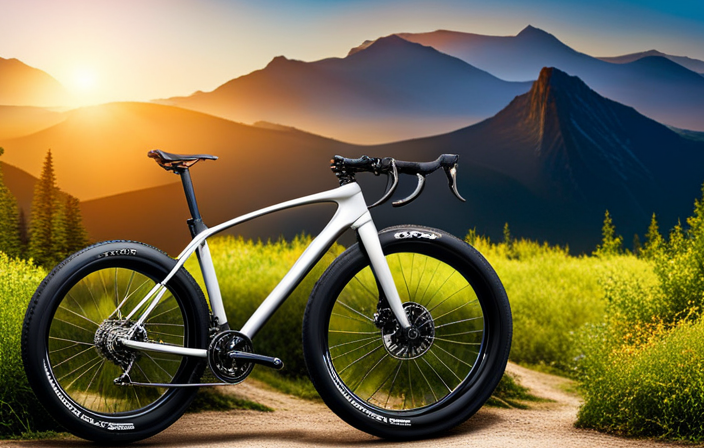
Ready to tackle the gravel trails but unsure which bike is best for the adventure? Look no further!
In this article, I’ll be your guide through the world of bikes designed specifically for those rough and rugged terrain. From mountain bikes built to tackle any obstacle, to versatile adventure bikes perfect for long distances, we’ll explore all the options available.
So, saddle up and get ready to find your ideal ride for those exhilarating gravel trails!
Key Takeaways
- High-quality touring bikes with wide tires and durable construction are ideal for gravel trails.
- Different touring bike brands offer unique advantages, so choose based on preferences and needs.
- Wide tires on soft surfaces provide increased comfort, improved control, better traction, reduced fatigue, and enhanced durability.
- The right tire tread is important for different terrains to maintain stability and prevent sliding.
Mountain Bikes
If you’re looking to ride on gravel trails, you’ll want to consider a mountain bike. Mountain bikes are designed for off-road riding and can handle the rough terrain that gravel trails often present. They have sturdy frames, wide tires with aggressive tread patterns, and suspension systems that absorb shocks and bumps. These features make them ideal for navigating through uneven surfaces and maintaining control on loose gravel.
When it comes to mountain biking techniques, there are a few things to keep in mind. First, always maintain a balanced body position by keeping your weight centered over the bike. This will help you maneuver through obstacles more easily. Second, use proper braking technique by applying both brakes evenly to avoid skidding or losing control. Lastly, practice shifting gears smoothly to ensure efficient power transfer when climbing or descending.
Maintenance tips for mountain bikes include regularly cleaning and lubricating the chain to prevent rust and improve performance. It’s also important to check tire pressure before each ride and inspect the brakes for wear.
Now let’s transition into discussing gravel bikes without missing a beat. Gravel bikes offer some unique advantages when it comes to riding on gravel trails…
Gravel Bikes
When considering off-road paths, a gravel bike is an excellent choice. Gravel bikes are specifically designed to handle the challenges of riding on gravel trails, making them perfect for adventurous riders looking to explore new terrains. These bikes have several features that set them apart from other types of bicycles.
One key feature of gravel bikes is their wider tires, typically ranging from 35mm to 45mm in width. This allows for better traction and stability on loose surfaces, ensuring a smooth and comfortable ride. Additionally, gravel bikes often have a more relaxed geometry compared to road or mountain bikes, providing a more upright position that enhances comfort during long rides.
When it comes to brands, there are several reputable options available in the market. Some popular gravel bike brands include Specialized, Trek, Giant, and Cannondale. These brands offer a wide range of models with varying components and price points to suit different budgets and preferences.
Transitioning into the next section about cyclocross bikes, it’s important to note that while both gravel bikes and cyclocross bikes are suitable for off-road riding, they have slight differences in design and intended use.
Cyclocross Bikes
When it comes to off-road riding, one of the best options is a Cyclocross bike. These bikes are known for their agility and responsiveness, making them perfect for navigating through gravel trails and other challenging terrains.
Additionally, Cyclocross bikes are typically lighter in weight compared to other types of bikes, allowing for faster acceleration and easier maneuverability. Another advantage is their narrower tires, which provide better efficiency on hard surfaces, allowing riders to maintain speed with less effort.
Overall, if you’re looking for a bike that can handle off-road adventures with ease while still offering great performance on smoother surfaces, a Cyclocross bike is definitely worth considering.
Agile and Responsive for Off-Road Riding
For off-road riding, it’s essential to choose a bike that’s agile and responsive. One key aspect to consider is the benefit of suspension systems for off-road riding. These systems allow the bike to absorb bumps and uneven surfaces, providing a smoother and more comfortable ride. They also help maintain better control and traction on rough terrains, enhancing overall performance.
Another factor that plays a crucial role in agility and control is proper bike fit. A bike that fits well ensures an optimal riding position, allowing for quick maneuvering and precise handling on gravel trails. It’s important to find the right frame size, handlebar width, and saddle height that suit your body dimensions.
By prioritizing agility and control through suspension systems and proper fit, you’ll be able to tackle off-road trails with confidence and ease.
Speaking of ease, let’s now transition into discussing the importance of lighter weight for faster acceleration without skipping a beat.
Lighter Weight for Faster Acceleration
To achieve faster acceleration, prioritize a lighter weight when choosing your off-road bike. A lighter bike allows for quicker maneuverability and easier pedaling, resulting in faster speeds. Every ounce counts on gravel trails, helping you gain and maintain momentum. A lighter bike also improves climbing capabilities, requiring less effort on steep inclines. Manufacturers reduce overall weight to create agile and responsive frames and components for off-road riding, enhancing your experience on challenging terrain.
With faster acceleration and improved climbing abilities, a lighter-weight off-road bike enhances your performance on gravel trails.
When it comes to efficiency on hard surfaces, narrower tires are key.
Narrower Tires for Better Efficiency on Hard Surfaces
Choosing a lighter off-road bike with narrower tires can greatly improve efficiency on hard surfaces. When it comes to gravel trails, opting for narrower tires over wider ones has its advantages. Here are four reasons why:
-
Increased speed: Narrower tires have less rolling resistance, allowing you to accelerate faster and maintain higher speeds on hard surfaces.
-
Better traction: With less surface area in contact with the ground, narrower tires can dig into loose gravel and provide better grip.
-
Improved maneuverability: The reduced width of the tires makes it easier to navigate corners and switch directions quickly.
-
Less maintenance: Narrower tires tend to pick up fewer rocks and debris from the trail, minimizing the need for frequent cleaning.
Considering these benefits, a bike equipped with narrower tires is a great choice for efficient riding on hard-packed gravel trails.
Now let’s delve into the world of adventure bikes without skipping a beat.
Adventure Bikes
When looking for an adventure bike, you should consider the type of gravel trails you plan on riding. Adventure bikes are specifically designed to handle a variety of terrains, making them perfect for gravel trails. These bikes have features that enhance their performance and durability in off-road conditions.
One of the main benefits of adventure bikes is their versatility. They typically come with wider tires that provide better traction on loose surfaces like gravel. This allows you to navigate through uneven terrain with ease and confidence. Adventure bikes also have a more relaxed geometry compared to road bikes, providing a comfortable riding position for long hours on the saddle.
In addition to their tire width and geometry, adventure bikes often come equipped with disc brakes for reliable stopping power in all weather conditions. They also have mounting points for racks and panniers, allowing you to carry your gear on multi-day adventures.
Transitioning into the subsequent section about touring bikes, it’s important to note that while adventure bikes excel on gravel trails, touring bikes are specifically designed for long-distance rides on paved roads.
Touring Bikes
If you’re planning on taking long rides on paved roads, touring bikes are a great option. These bikes are specifically designed for long-distance travel and offer a comfortable riding experience. One of the key features of touring bikes is their ability to carry heavy loads, making them ideal for bikepacking or extended trips. They usually come with racks and panniers that allow you to easily transport your gear.
When it comes to choosing the best touring bike brand, there are several options available in the market. Some popular brands include Trek, Surly, and Salsa Cycles. These brands have a reputation for producing high-quality touring bikes that can withstand rough terrains and provide stability during long rides.
To help you better understand the different features offered by various touring bike brands, here’s a comparison table:
| Brand | Frame Material | Tire Size |
|---|---|---|
| Trek | Aluminum | 700c |
| Surly | Steel | 26" |
| Salsa | Carbon Fiber | 650b |
Each brand offers its unique advantages based on your preferences and needs. Now let’s move on to the next section about ‘fat bikes’ which are perfect for off-road adventures while still maintaining versatility and comfort."
Fat Bikes
When it comes to riding on soft surfaces like sand, snow, or mud, wide tires are essential for maximum traction. Fat bikes are designed with extra-wide tires that provide excellent grip and stability on these types of terrain.
The wide tires also allow the bike to float over these soft surfaces, making it easier to ride in challenging conditions. Additionally, fat bikes are built with durable construction to withstand rough conditions, ensuring that they can handle anything you throw at them.
Wide Tires for Maximum Traction on Soft Surfaces
For maximum traction on soft surfaces, wide tires are essential. When riding on gravel trails or any kind of loose terrain, having wider tires allows for a larger contact patch with the ground, which in turn provides better grip and stability.
The tire width you choose will depend on the specific terrain you plan to ride on. For example, if you’re mainly riding on packed gravel or hard-packed dirt, a tire width between 35-40mm would be suitable. On the other hand, if you anticipate encountering softer surfaces like sand or mud, opting for a tire width of 45-50mm would be more appropriate.
Wide tires also allow for lower tire pressure options, which further enhances their performance on soft surfaces. By decreasing the tire pressure within the recommended range (usually indicated on the sidewall), you increase the tire’s ability to conform and grip uneven terrain.
With their increased surface area and lower pressure capabilities, wide tires provide excellent flotation over sand, snow, and mud without sacrificing speed or agility. They effortlessly glide over these challenging terrains while providing exceptional traction and control.
Floats Over Sand, Snow, and Mud
Wide tires with their increased surface area and lower pressure capabilities effortlessly glide over sand, snow, and mud while providing exceptional traction and control. When it comes to conquering these soft surfaces, it’s crucial to understand the concept of floats vs sinks.
Wide tires excel in floating on top of loose terrain like sand or snow, preventing them from sinking in and getting stuck. Additionally, the best tire tread for different terrains plays a significant role in performance. Aggressive knobs are perfect for muddy conditions as they dig into the ground for maximum grip. On the other hand, smaller knobs with wider spacing work well on sandy trails by allowing the tire to float better. Lastly, a more closely spaced tread pattern is ideal for snowy conditions to maintain stability and prevent sliding.
Now let’s dive into discussing durable construction for rough conditions without any delay.
Durable Construction for Rough Conditions
With durable construction in mind, you’ll want to look for tires that can withstand rough conditions and provide long-lasting performance. When it comes to gravel trails, a bike with a sturdy frame is essential. Look for durable frame materials such as aluminum or steel, which can handle the bumps and vibrations of rough terrain. Additionally, consider suspension options to further enhance durability. Suspension forks absorb shocks and impacts, ensuring a smoother ride and reducing stress on the frame. A rear suspension system can also be beneficial for added comfort and control over uneven surfaces. By investing in a bike with durable construction and reliable suspension options, you can confidently tackle any rough conditions that come your way while enjoying the thrill of riding on gravel trails.
| Pros | Cons |
|---|---|
| Increased comfort | Added weight |
| Improved control | Higher cost |
| Better traction | Maintenance requirements |
| Reduced fatigue | Limited efficiency on smooth roads |
| Enhanced durability | Decreased pedaling efficiency |
Frequently Asked Questions
Can I use a mountain bike for gravel trails?
Yes, you can use a mountain bike for gravel trails. It has its pros and cons.
The pros include the ability to handle rough terrain with ease and provide better control on descents.
However, the cons include slower speeds on flat surfaces and less efficiency compared to a hybrid bike.
When choosing tire width for a mountain bike on gravel trails, consider wider tires (around 2 inches) for improved stability and traction, while narrower tires offer more speed but less stability.
What is the main difference between a gravel bike and a cyclocross bike?
Comparing gravel bikes to cyclocross bikes is like comparing a sturdy SUV to a nimble rally car. Both are designed for off-road adventures, but with different focuses.
Gravel bikes excel in long-distance comfort and versatility, making them ideal for exploring various terrain types.
On the other hand, cyclocross bikes prioritize speed and agility, perfect for intense races on rough courses.
Ultimately, the choice between the two depends on your specific off-road preferences and riding style.
Are adventure bikes suitable for long-distance rides on gravel trails?
Adventure bikes can be a great option for long-distance rides on gravel trails. They offer a comfortable riding position and are designed to handle rough terrains.
The pros of using a gravel bike for long distance rides include their versatility, allowing you to tackle different surfaces with ease. However, there are alternative bike options for gravel trails such as mountain bikes or cyclocross bikes that may provide better performance in certain situations.
Consider your specific needs and preferences when choosing the right bike.
Can I use a touring bike for off-road gravel trails?
Yes, you can use a touring bike for off-road gravel trails. While it may not be as nimble as a dedicated gravel bike, a touring bike offers stability and durability, making it suitable for rough terrains. It is important to choose a model with wider tires and sturdy construction.
Additionally, while hybrid bikes can handle some off-road trails, they may not be ideal for more challenging terrains.
As for speed, a gravel bike is generally faster than a mountain bike on gravel trails due to its lighter frame and more efficient rolling resistance.
Are fat bikes recommended for gravel trails or are they more suited for snow or sand terrains?
Fat bikes are versatile and can handle a variety of terrains, including gravel trails. Their wide tires provide excellent traction on loose surfaces, making them suitable for off-road adventures.
However, fat bikes may not be as efficient or fast on smoother trails compared to gravel bikes. Gravel bikes are specifically designed for off-road riding and offer a more efficient and comfortable experience on gravel trails.
Ultimately, the choice between fat bikes and gravel bikes depends on personal preference and the specific terrain you plan to ride on.
Conclusion
In conclusion, it’s important to choose a bike that suits your needs and riding style when considering what kind of bike to buy for gravel trails. Whether it’s a mountain bike for technical terrain or a gravel bike for smoother paths, there are plenty of options available.
One interesting statistic to note is that sales of adventure bikes have increased by 60% in the past year, reflecting the growing popularity of this versatile and capable type of bike.
So, go out there and find the perfect ride to conquer those gravel trails!
Olivia’s writing is not only informative but also inspiring. She has a knack for telling stories that capture the essence of cycling and the joy it brings to people’s lives. Her writing has been praised by readers and industry experts alike for its clarity, depth, and authenticity.
In addition to her writing, Olivia is also an avid cyclist. She enjoys exploring new trails and routes and has participated in several cycling events and races. Her first-hand experience with cycling gives her a unique perspective on the sport, reflected in her writing.
Overall, Olivia is a talented writer passionate about cycling and dedicated to producing high-quality content for FlatironBike. Her contributions to the magazine have helped make it a go-to source for cycling enthusiasts worldwide.
-

 Vetted4 days ago
Vetted4 days ago12 Best Men's Cycling Bib Shorts for Comfort and Performance – Reviewed & Rated
-

 Electric Bike5 months ago
Electric Bike5 months agoHow To Turn Your Bike Into An Electric Generator
-

 Vetted4 days ago
Vetted4 days ago15 Best Fixed Gear Bikes for Urban Commuting and Stylish Riding
-

 Vetted4 days ago
Vetted4 days ago15 Best Comfort Bikes for a Smooth and Enjoyable Ride
-
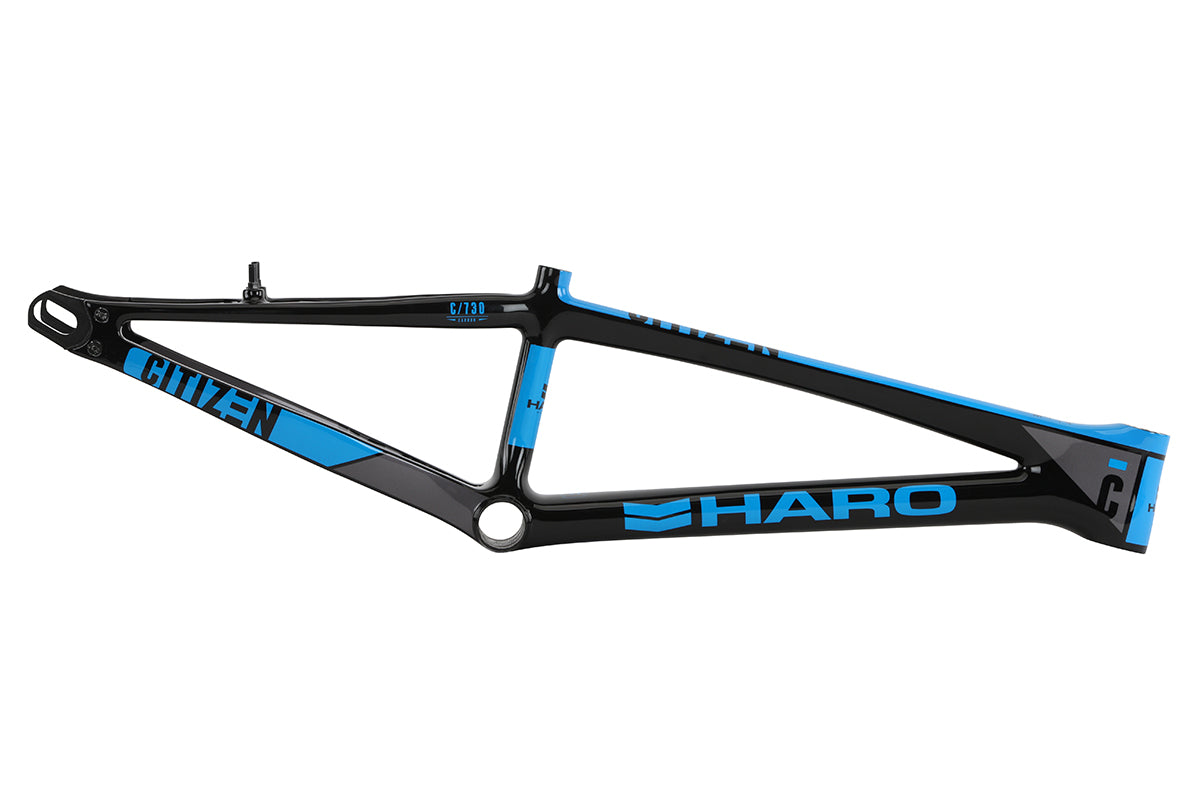
 Bike8 months ago
Bike8 months agoAdvantages and Disadvantages of a Carbon Fiber Bike Frame
-

 Vetted4 days ago
Vetted4 days ago15 Best Cycling Jerseys for Men to Elevate Your Riding Game
-

 Vetted4 days ago
Vetted4 days ago15 Best Cycling Gloves for Comfort and Performance – Ultimate Guide for Cyclists
-
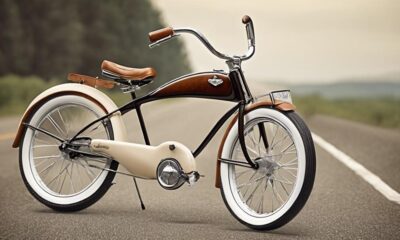
 Vetted4 days ago
Vetted4 days ago15 Best Cruiser Bikes to Hit the Road in Style
